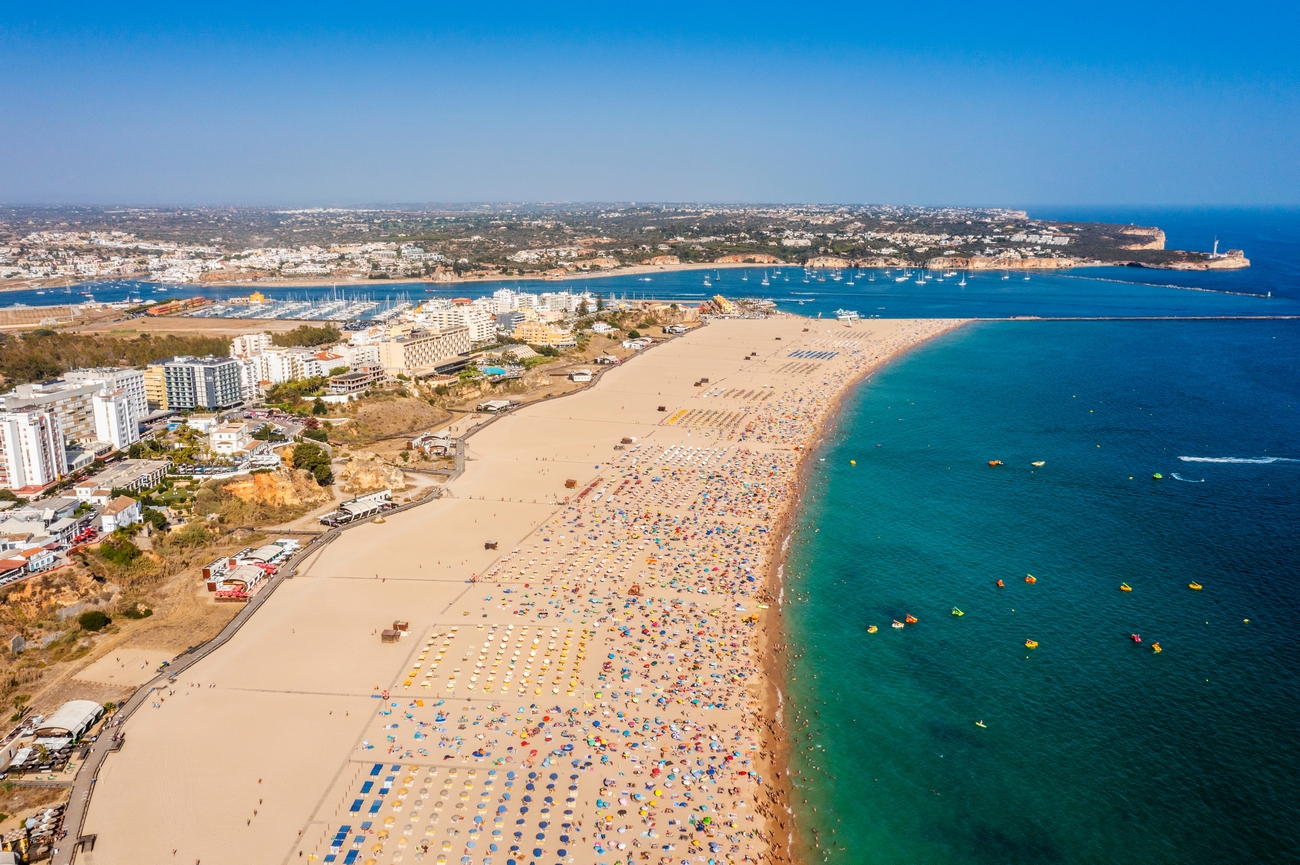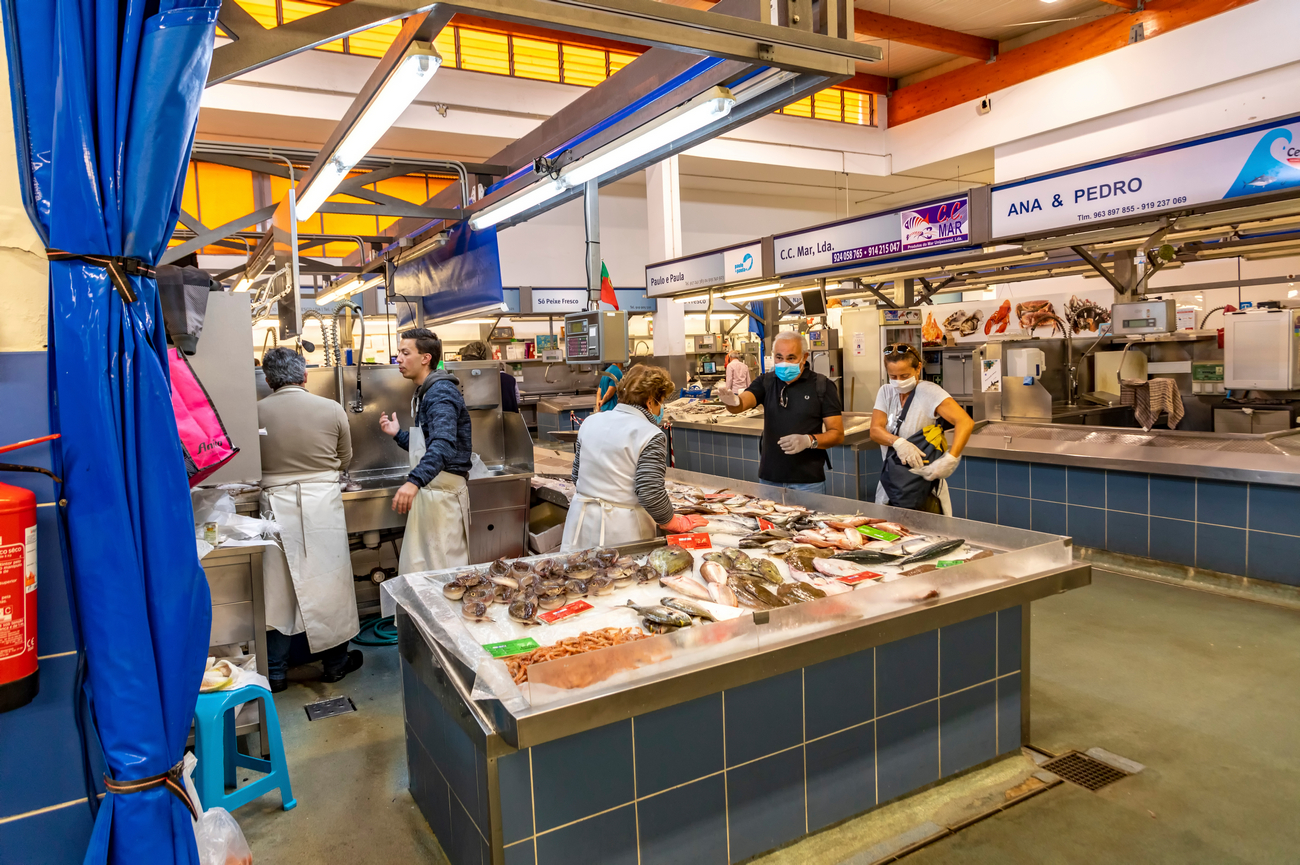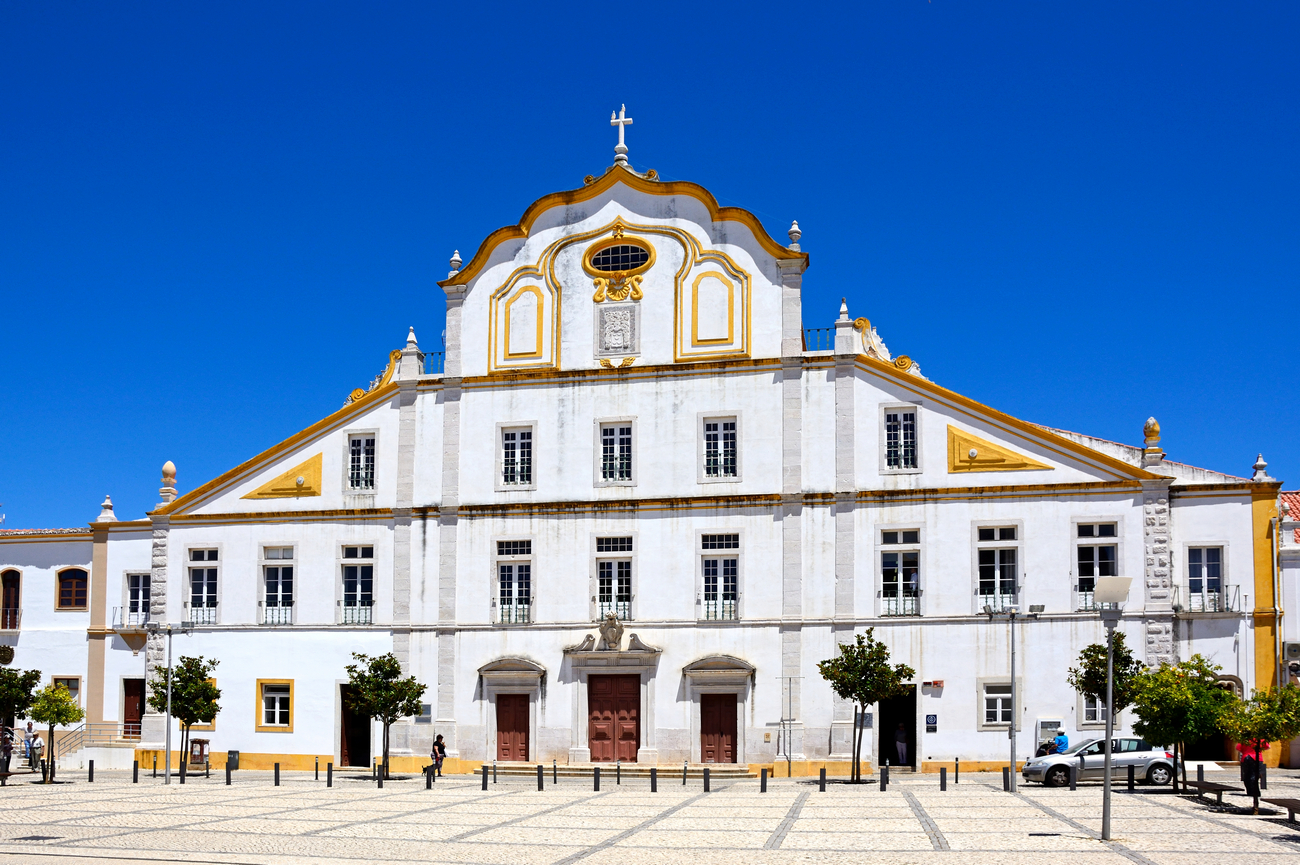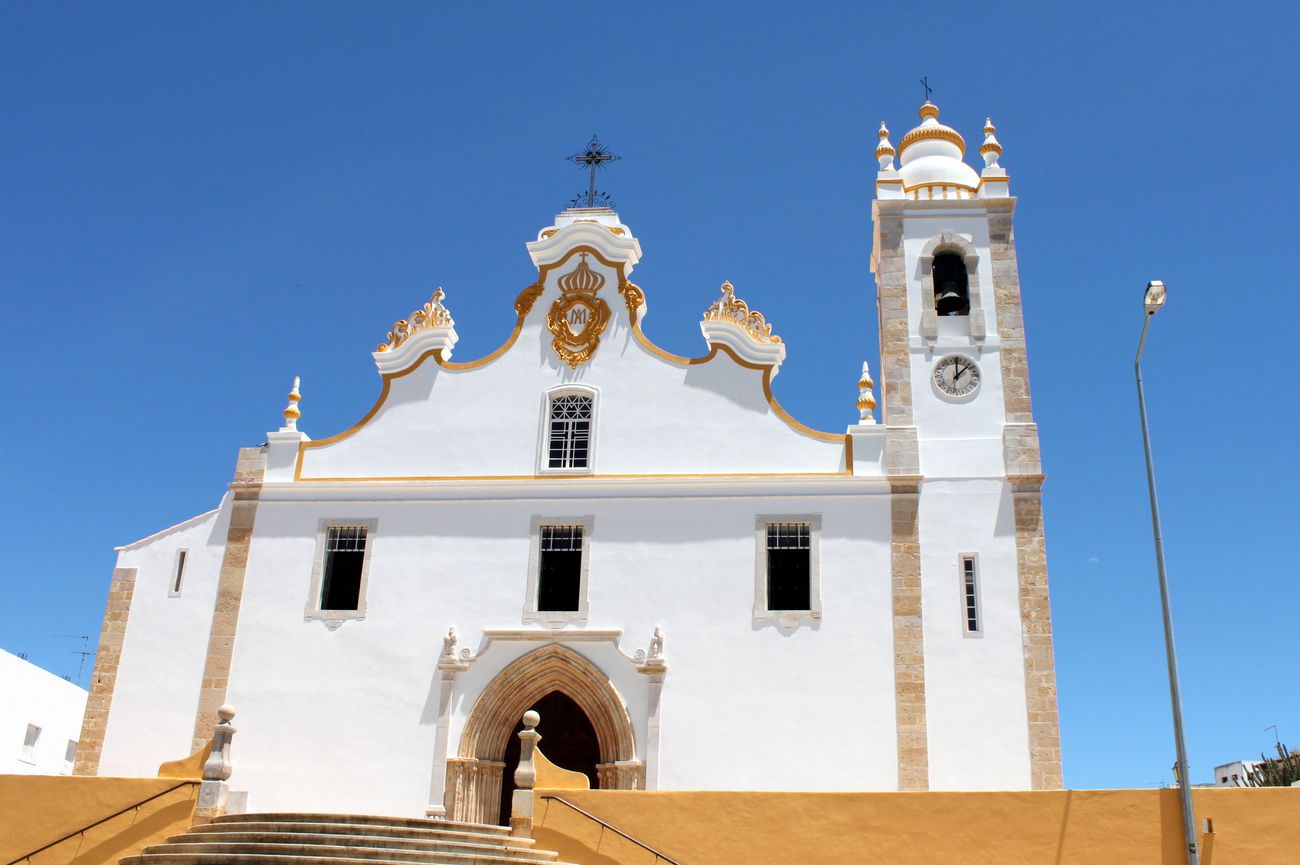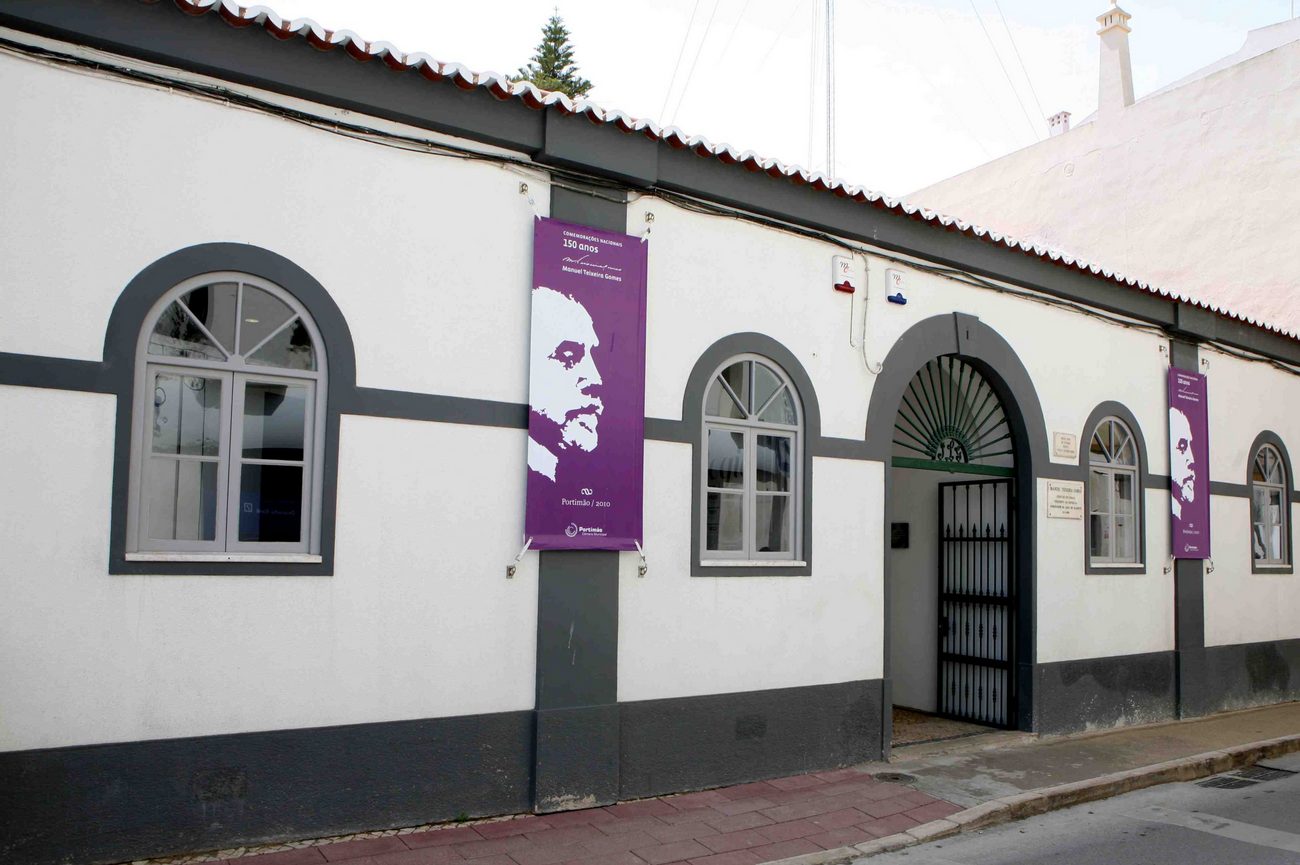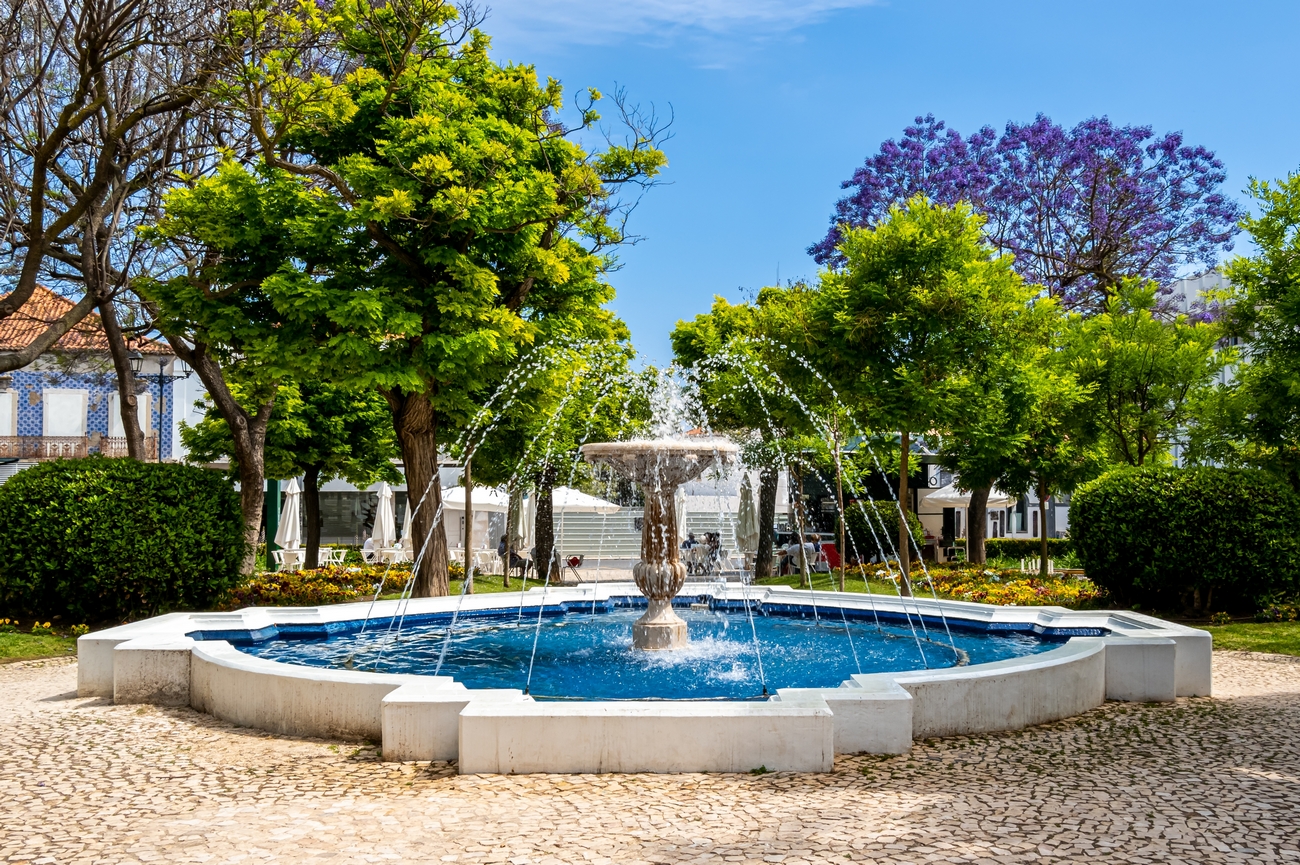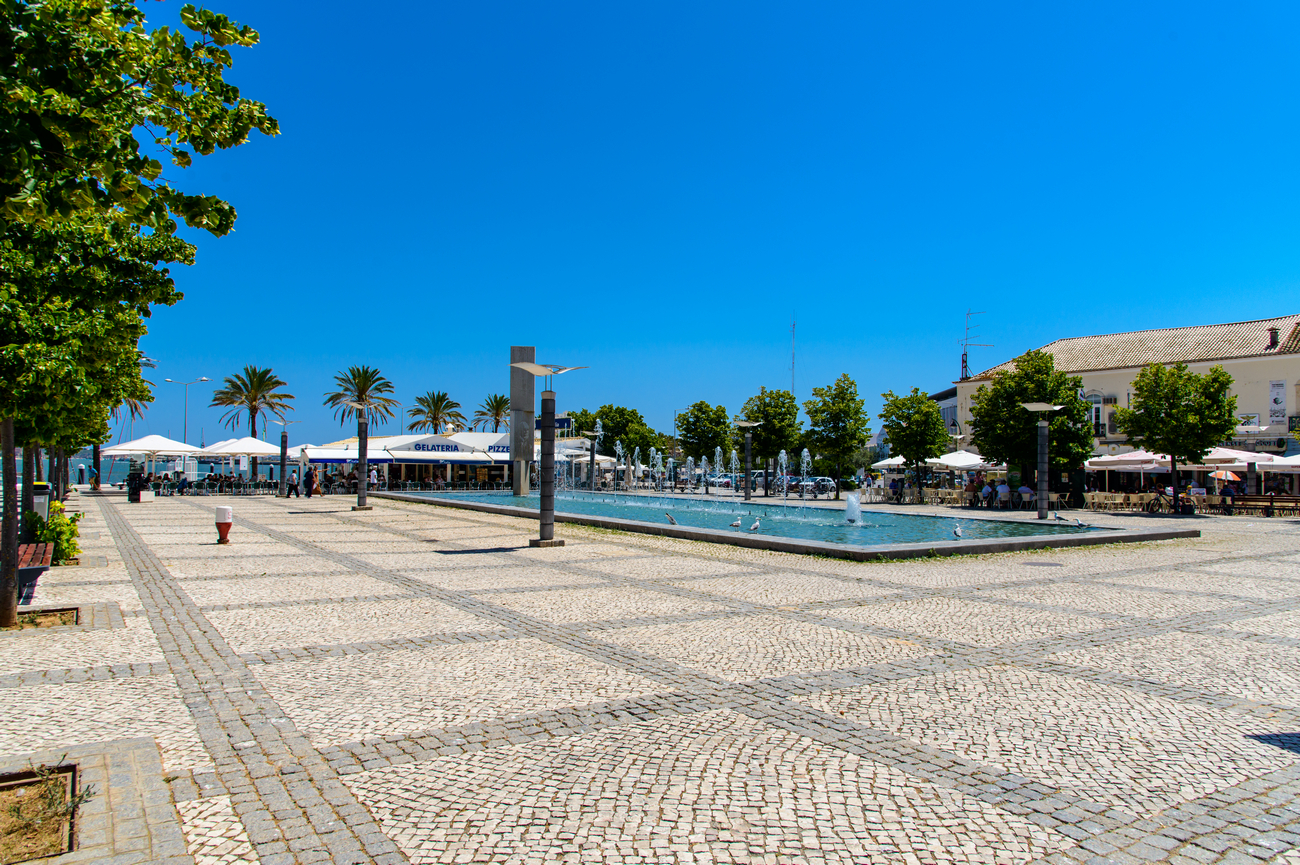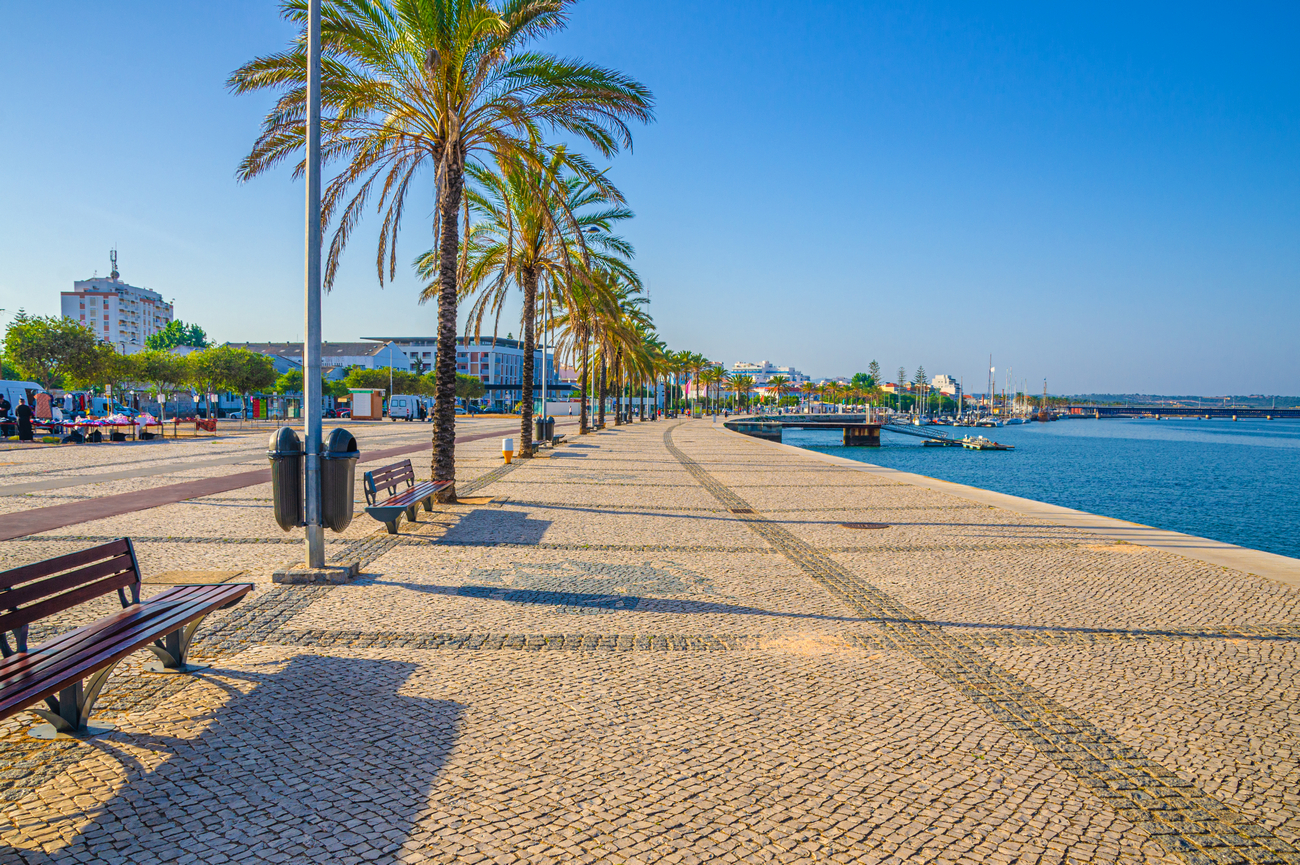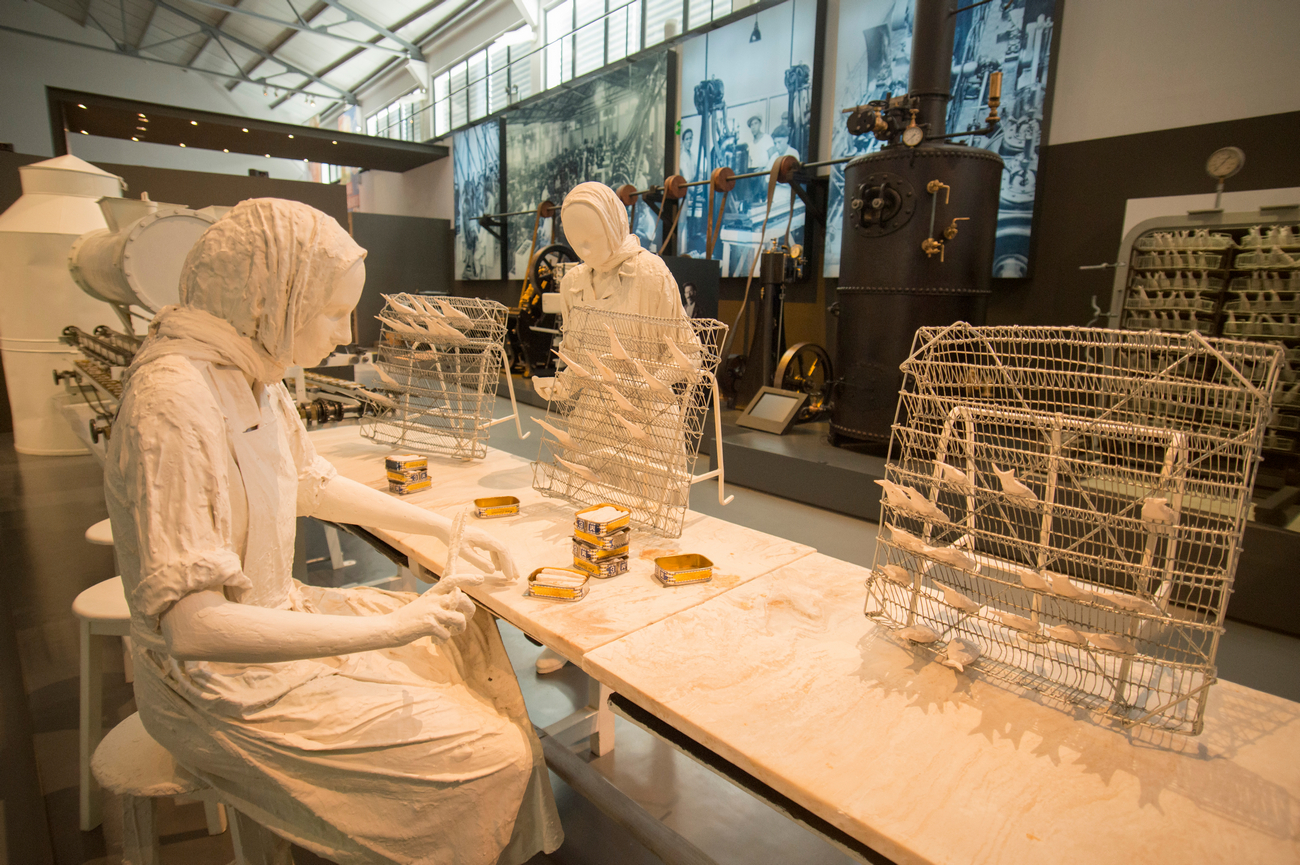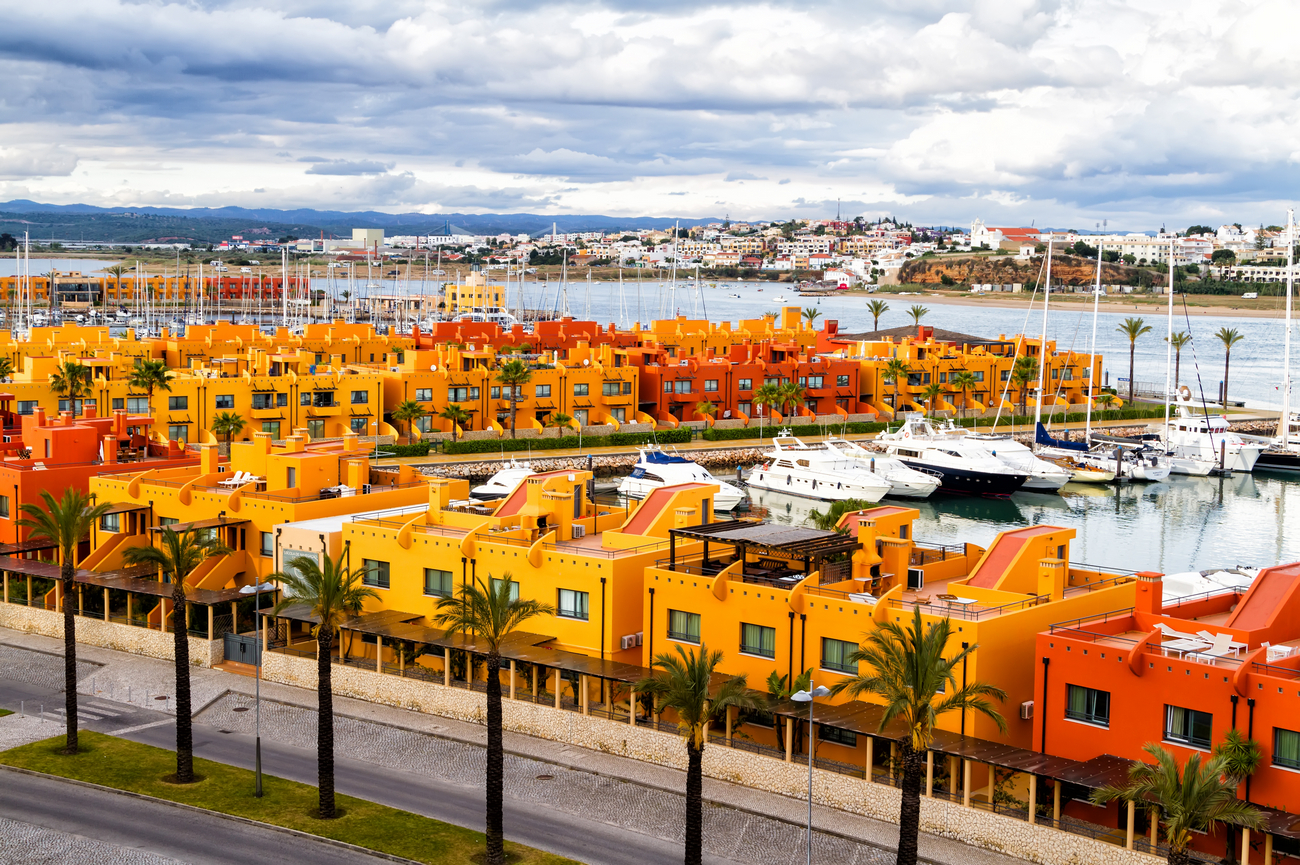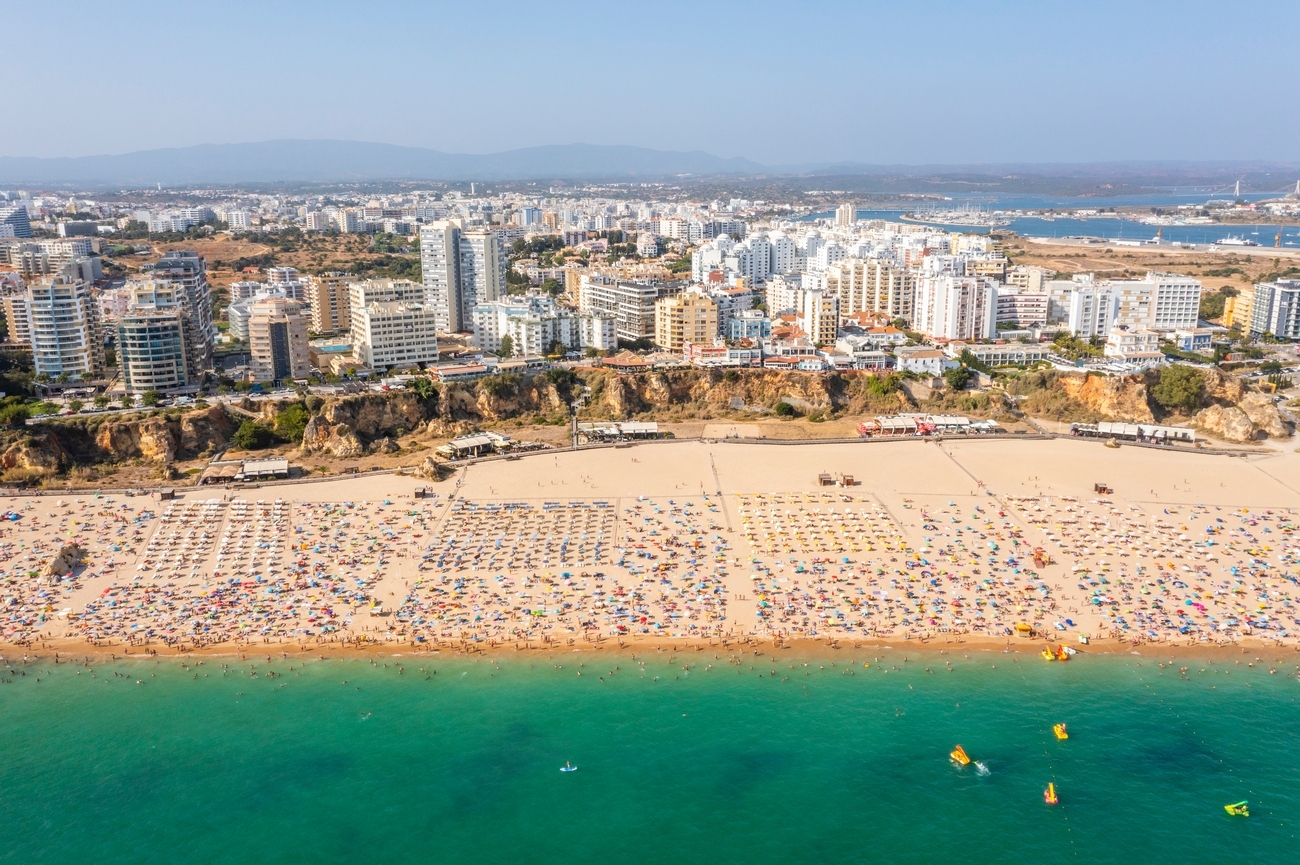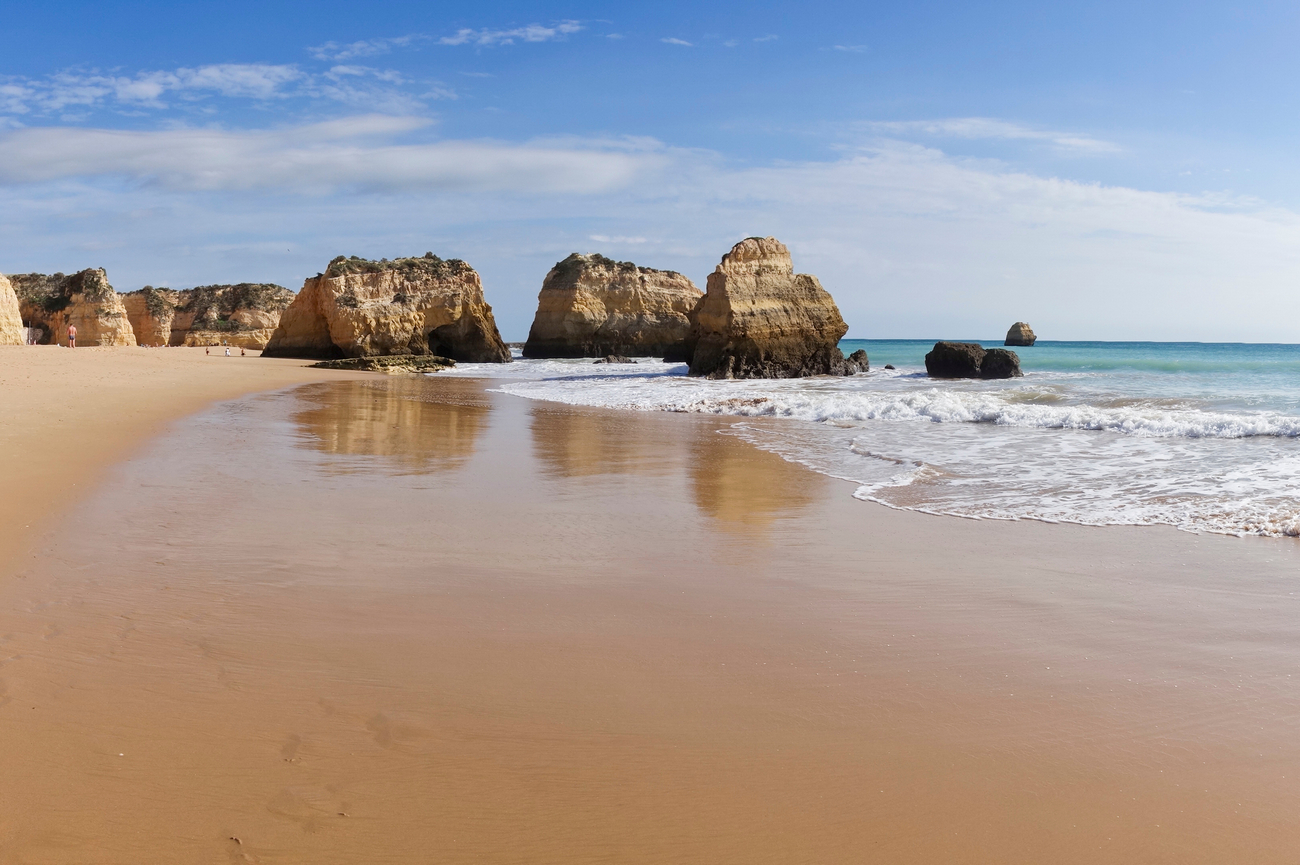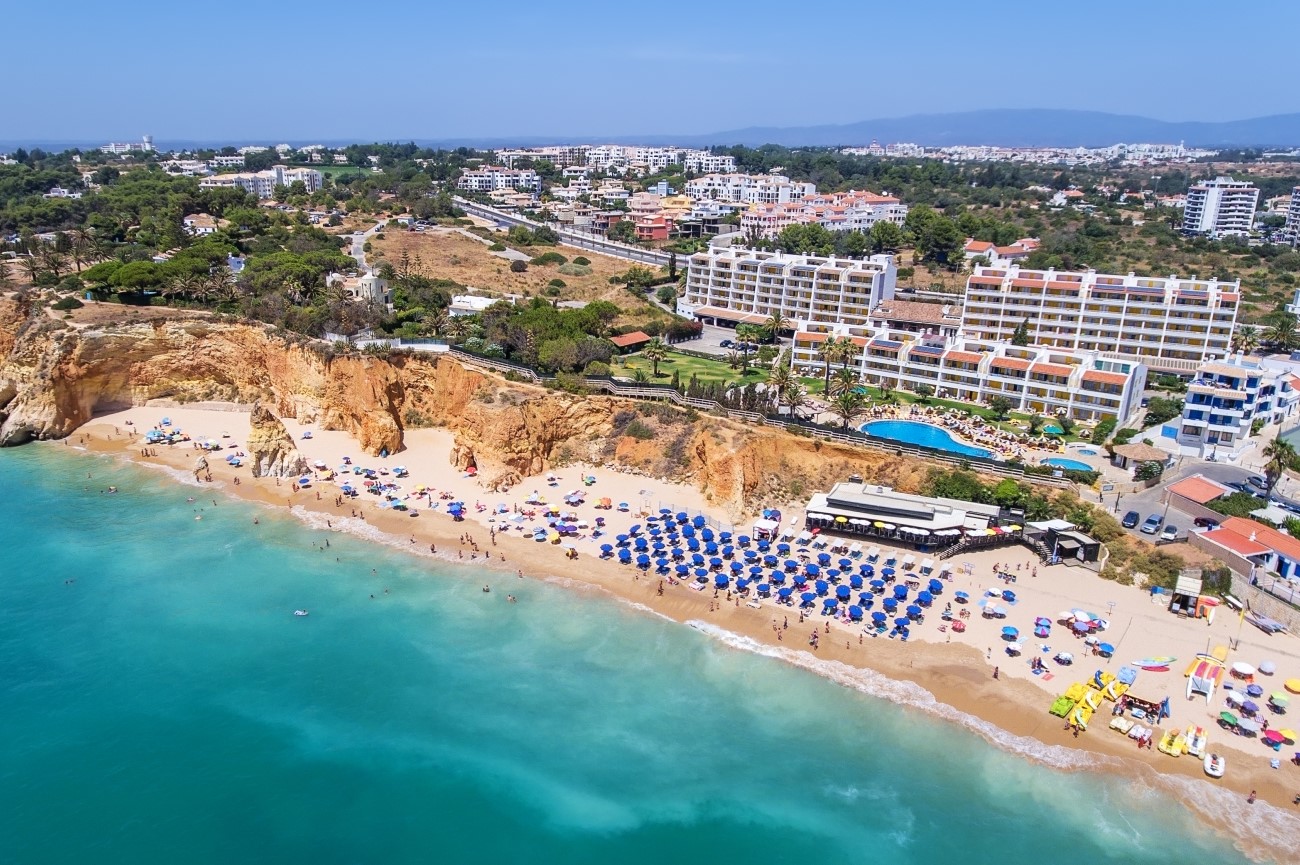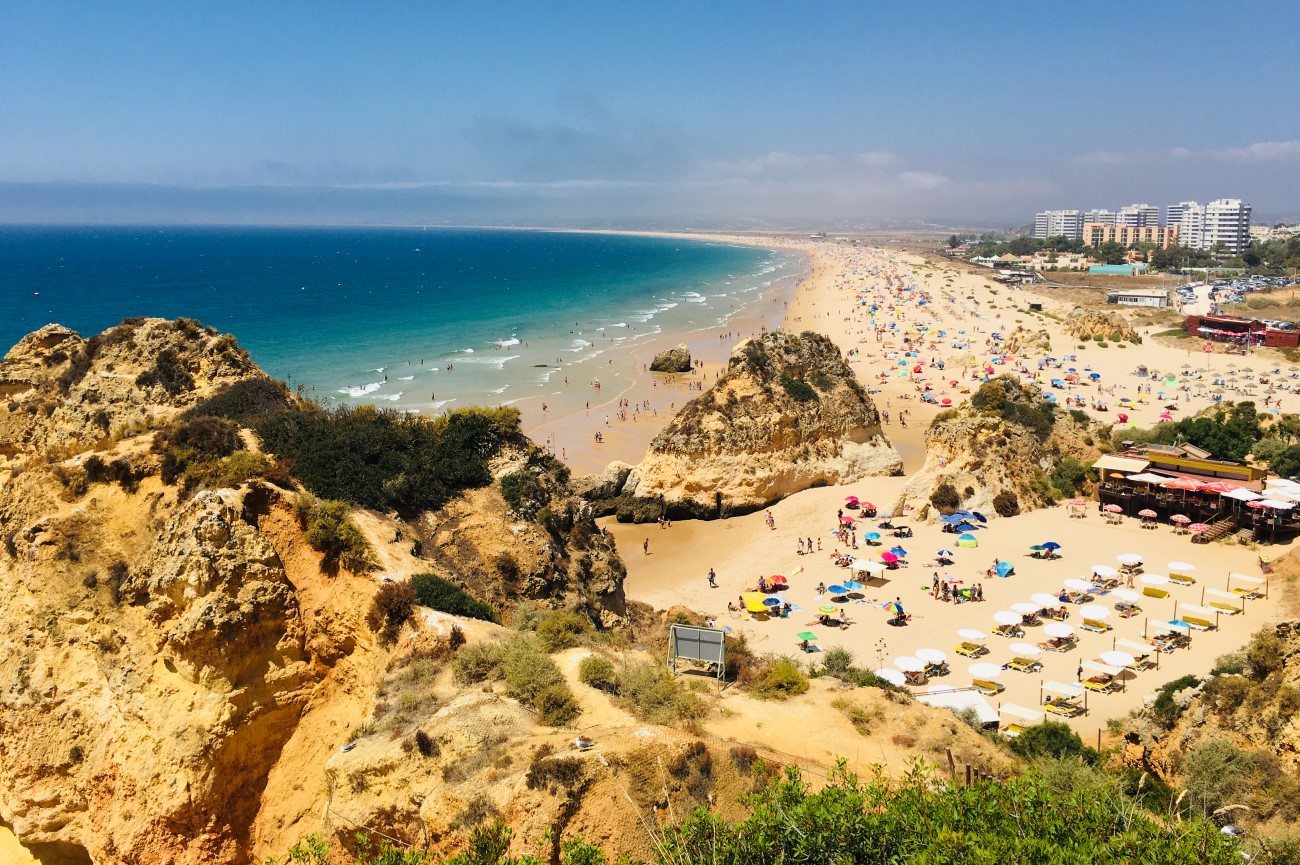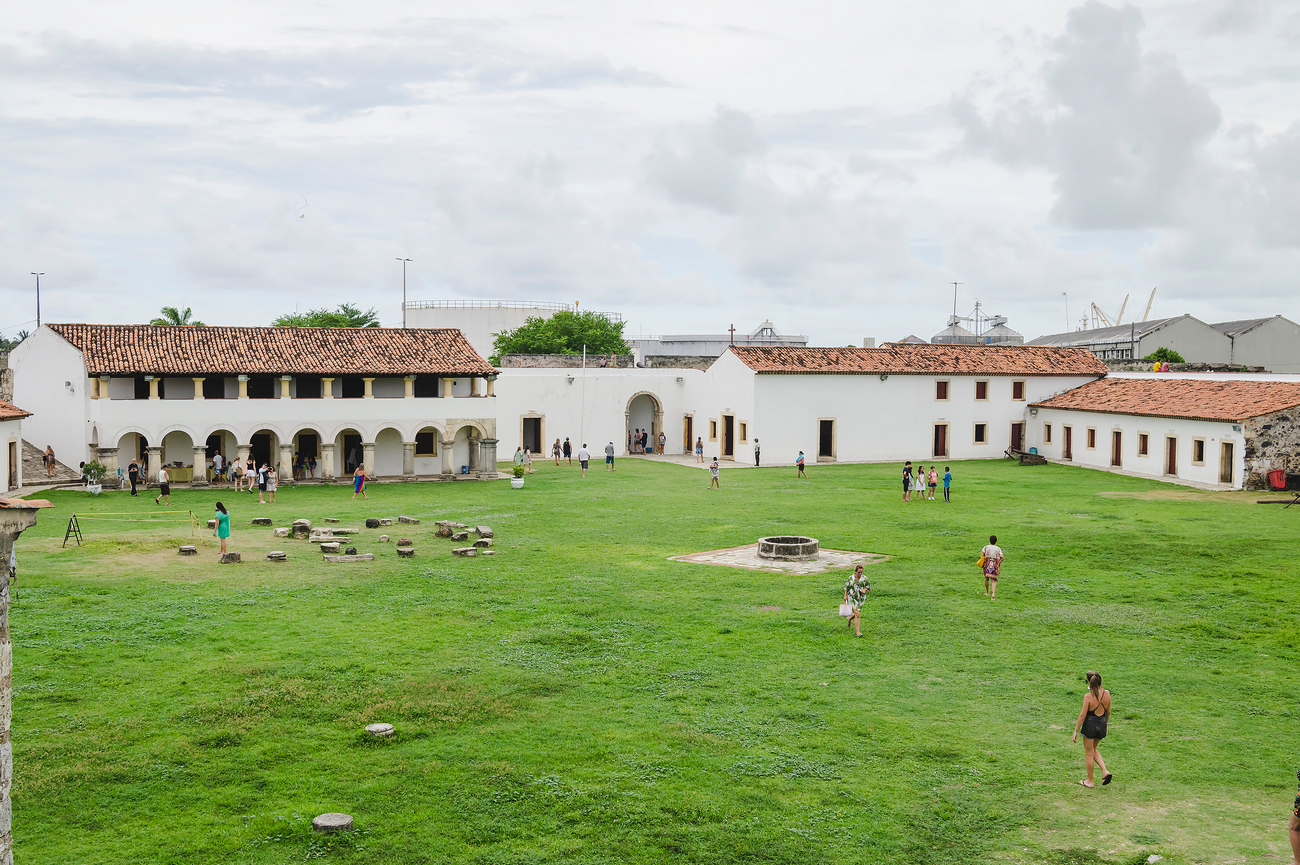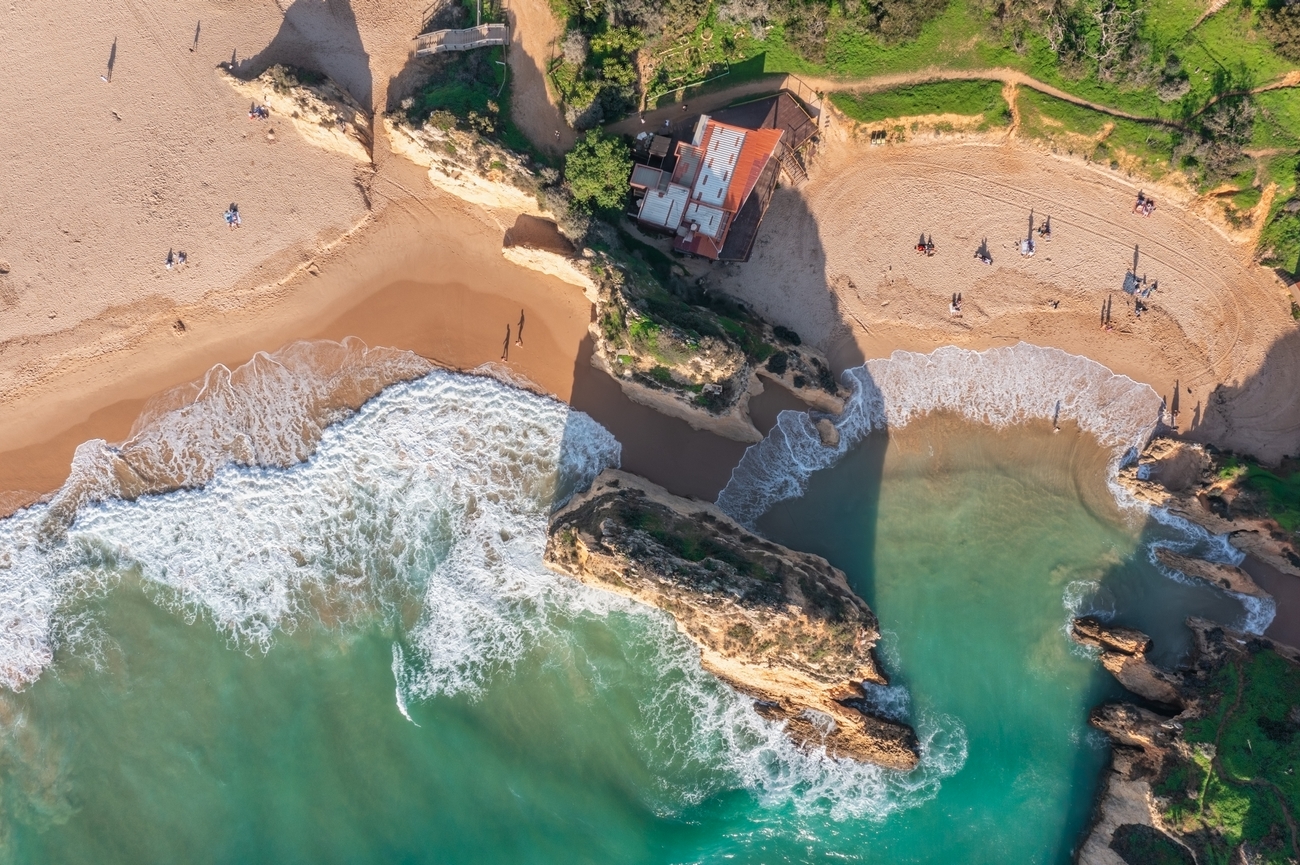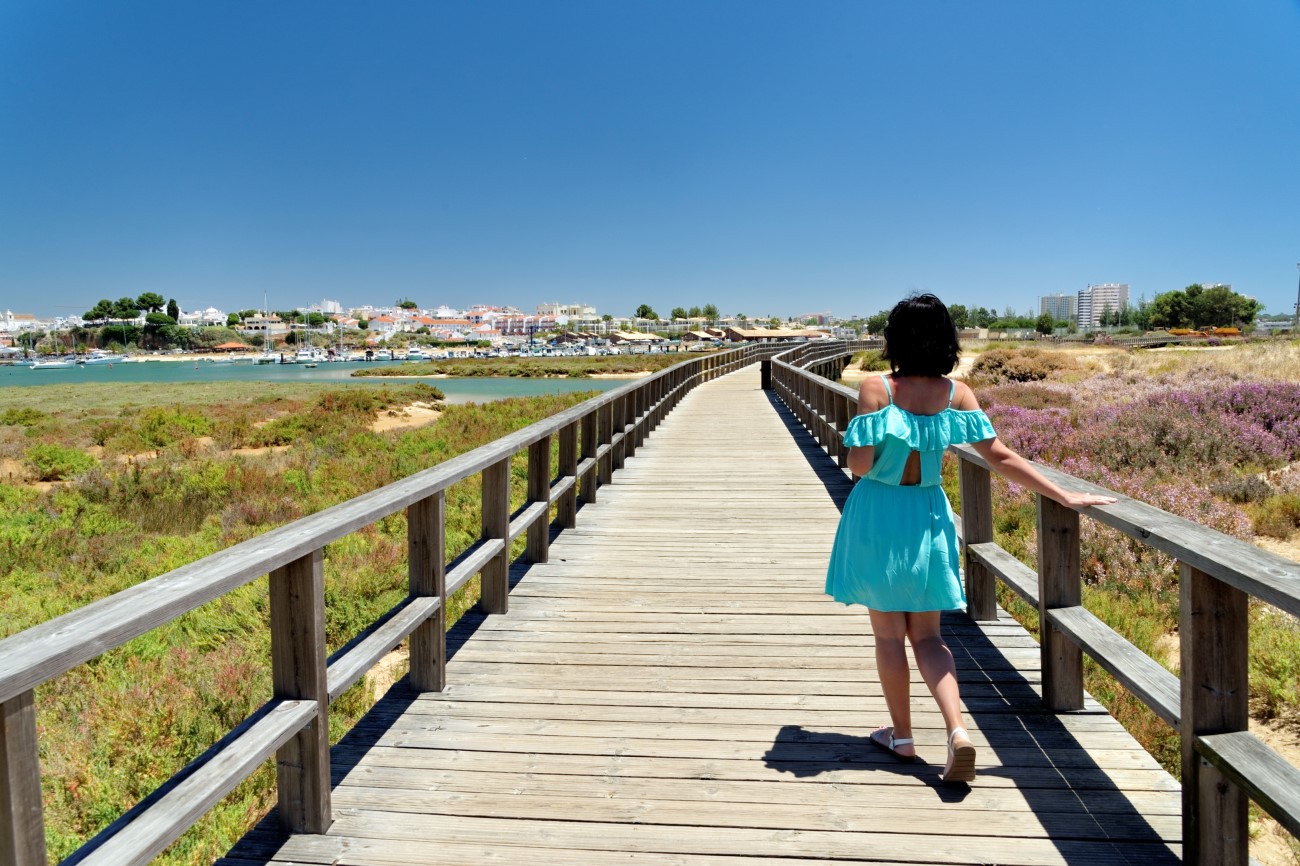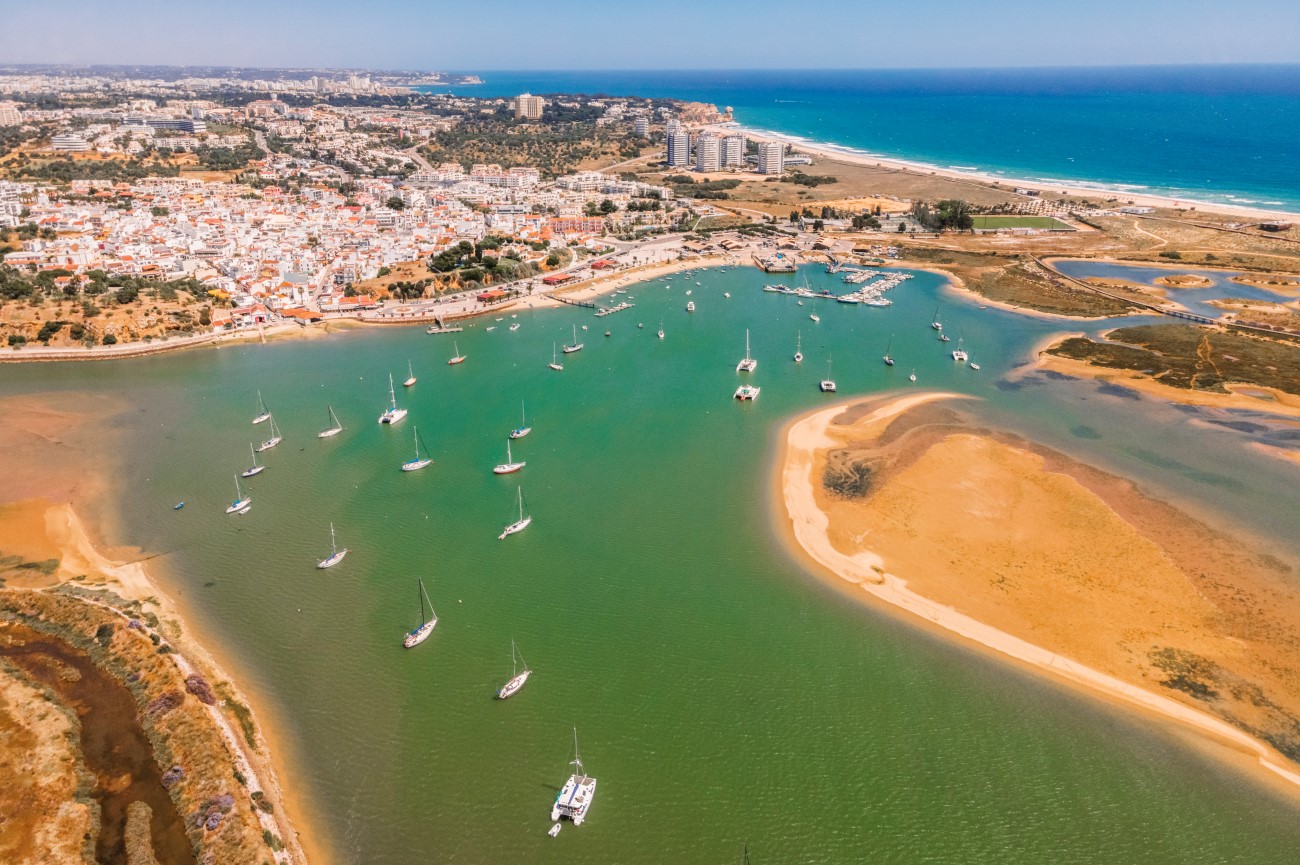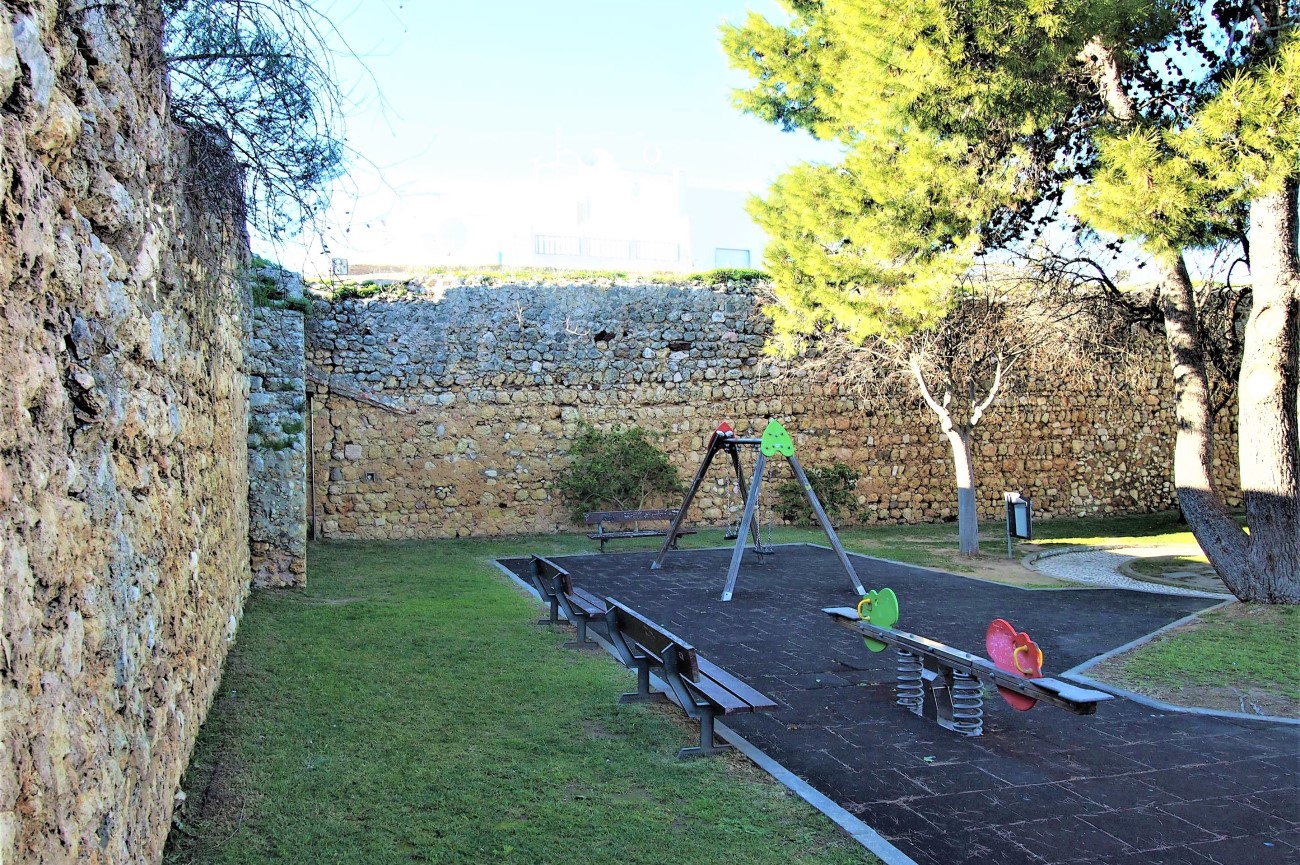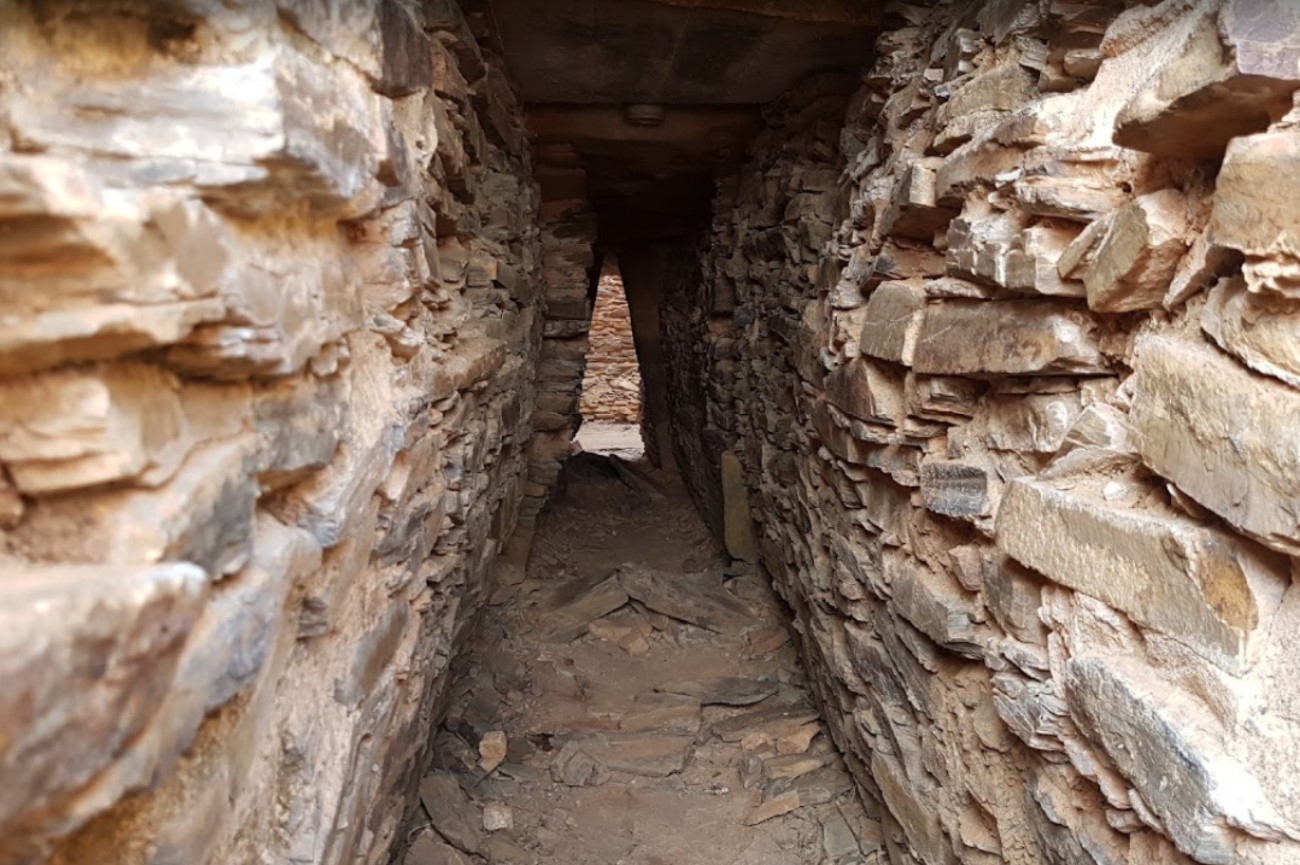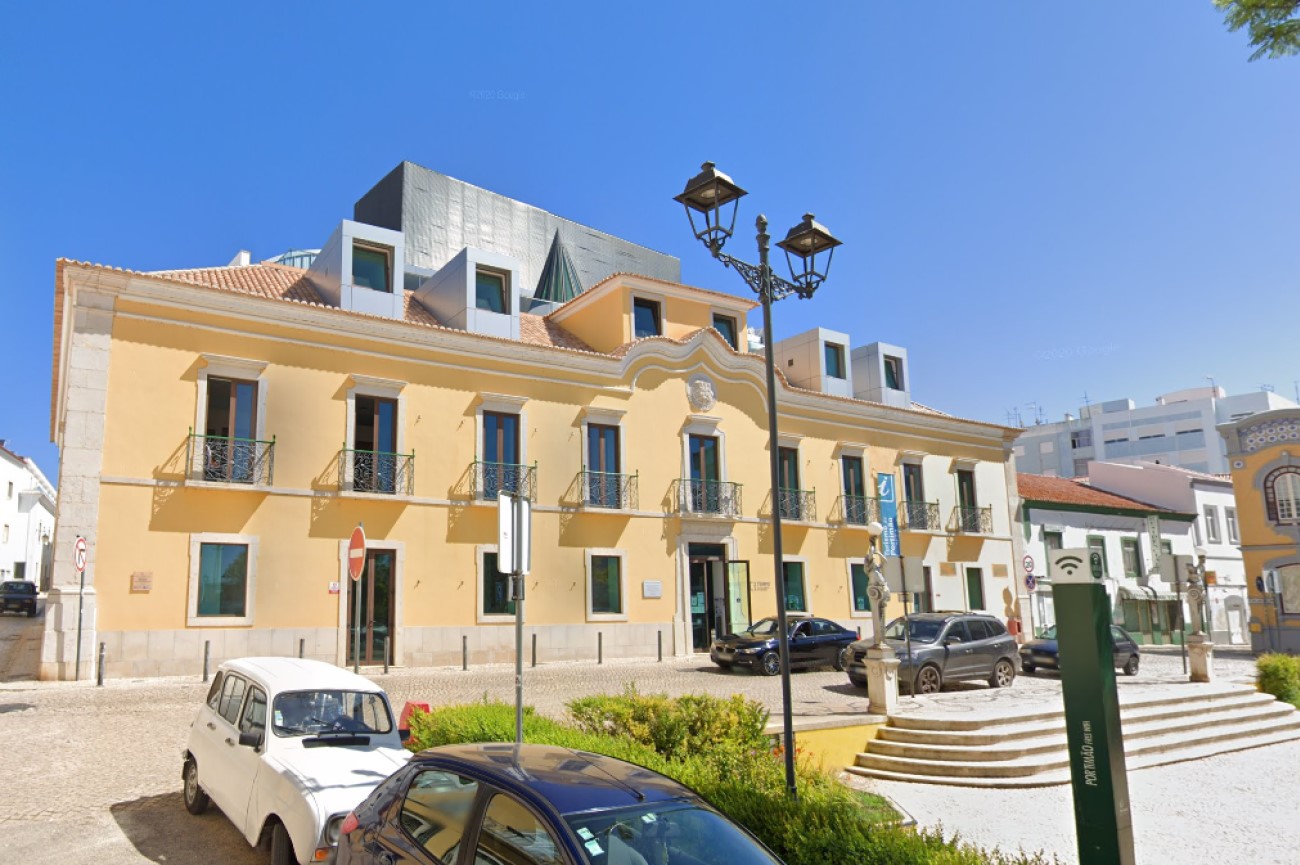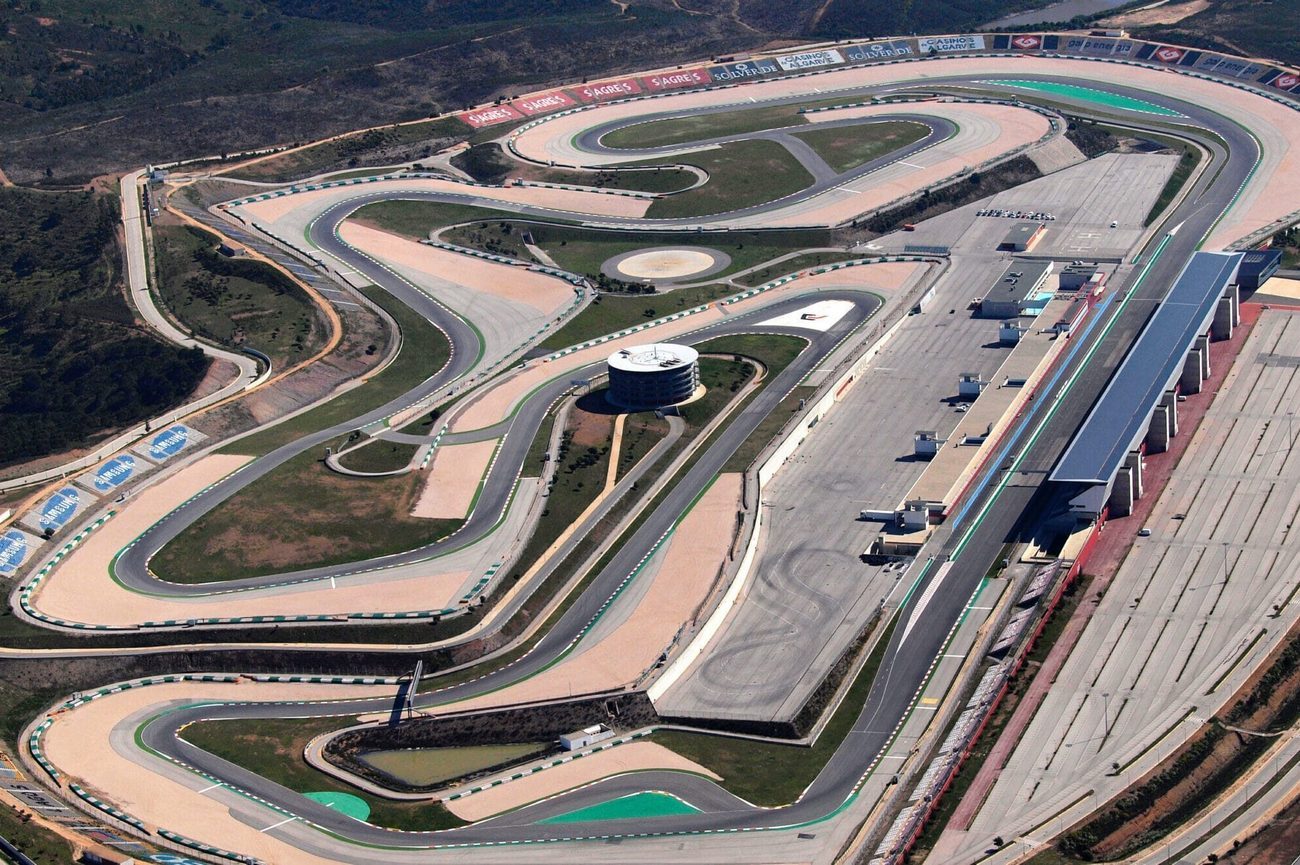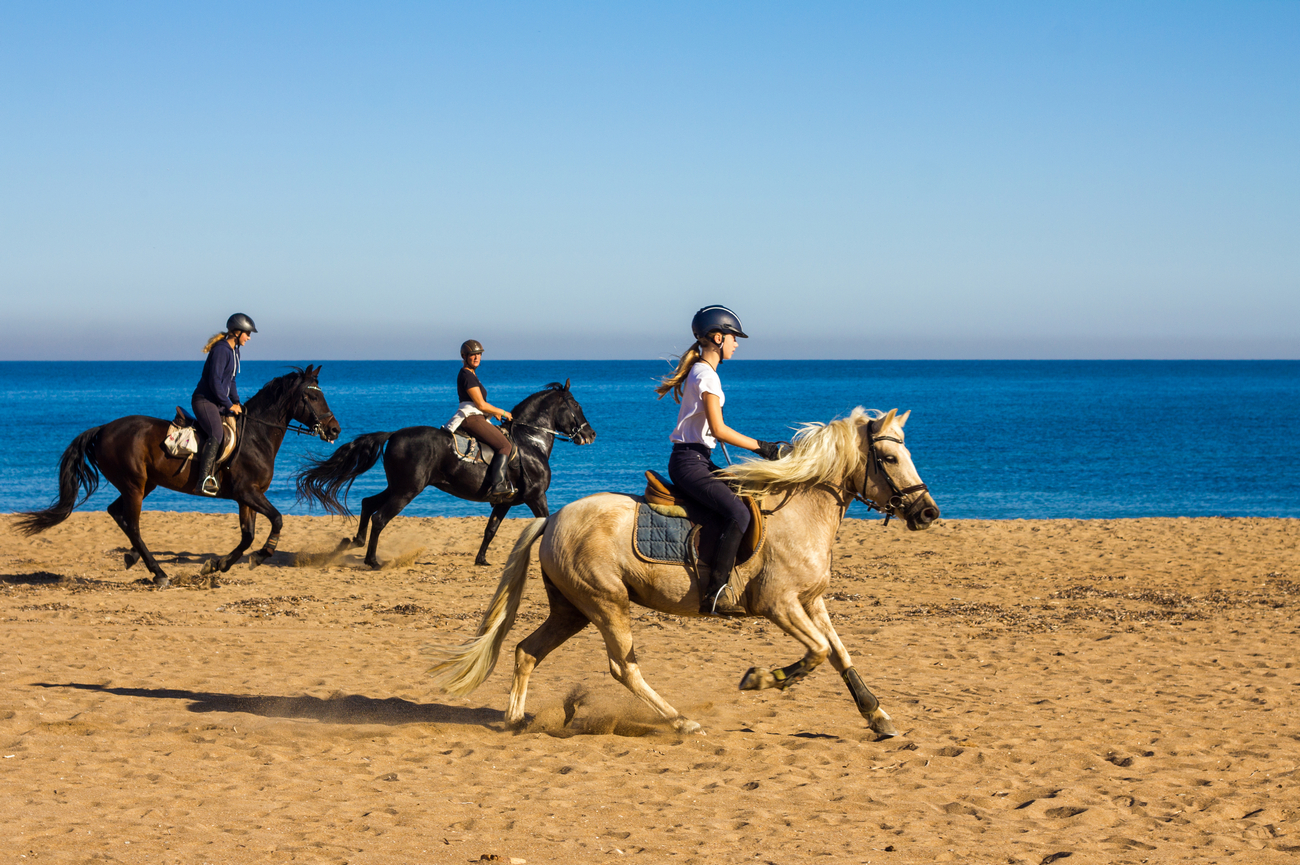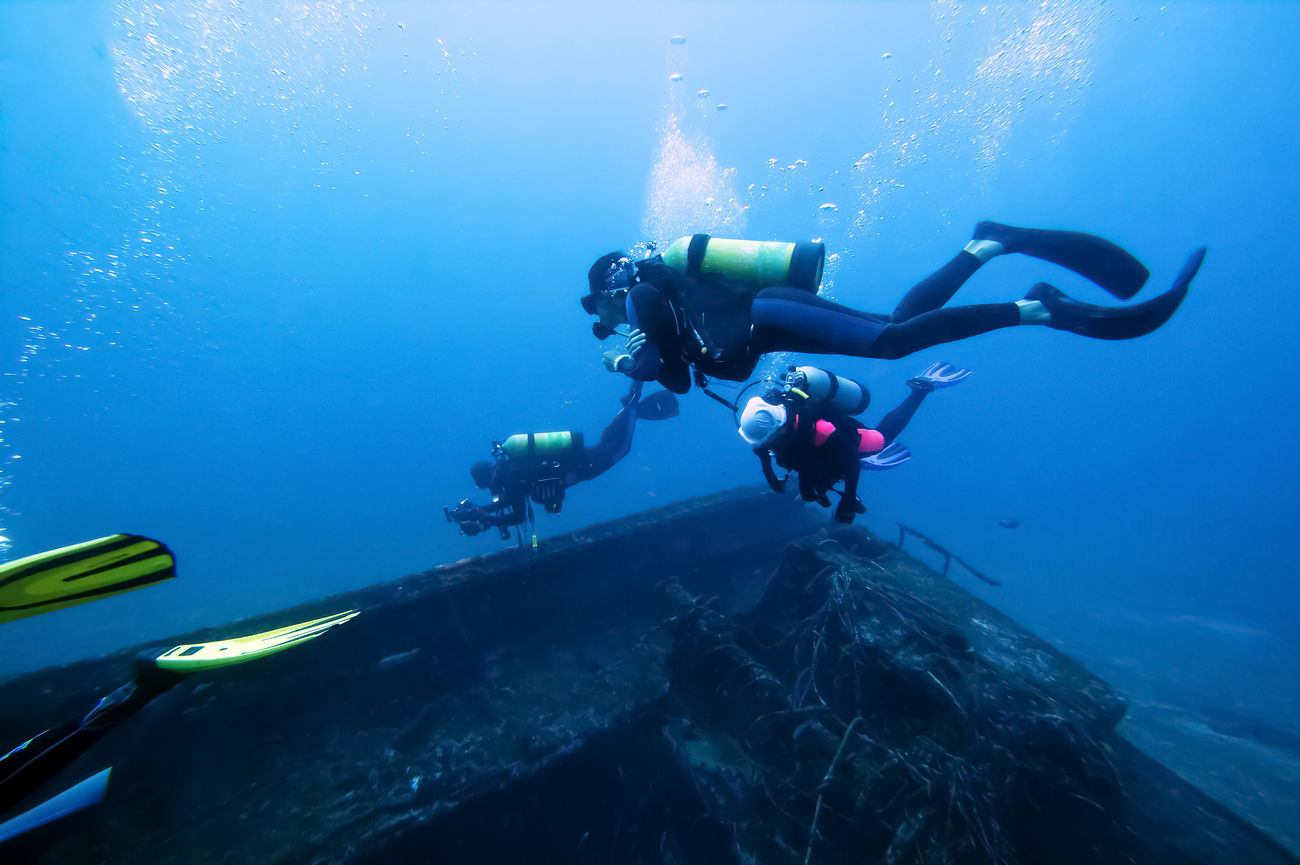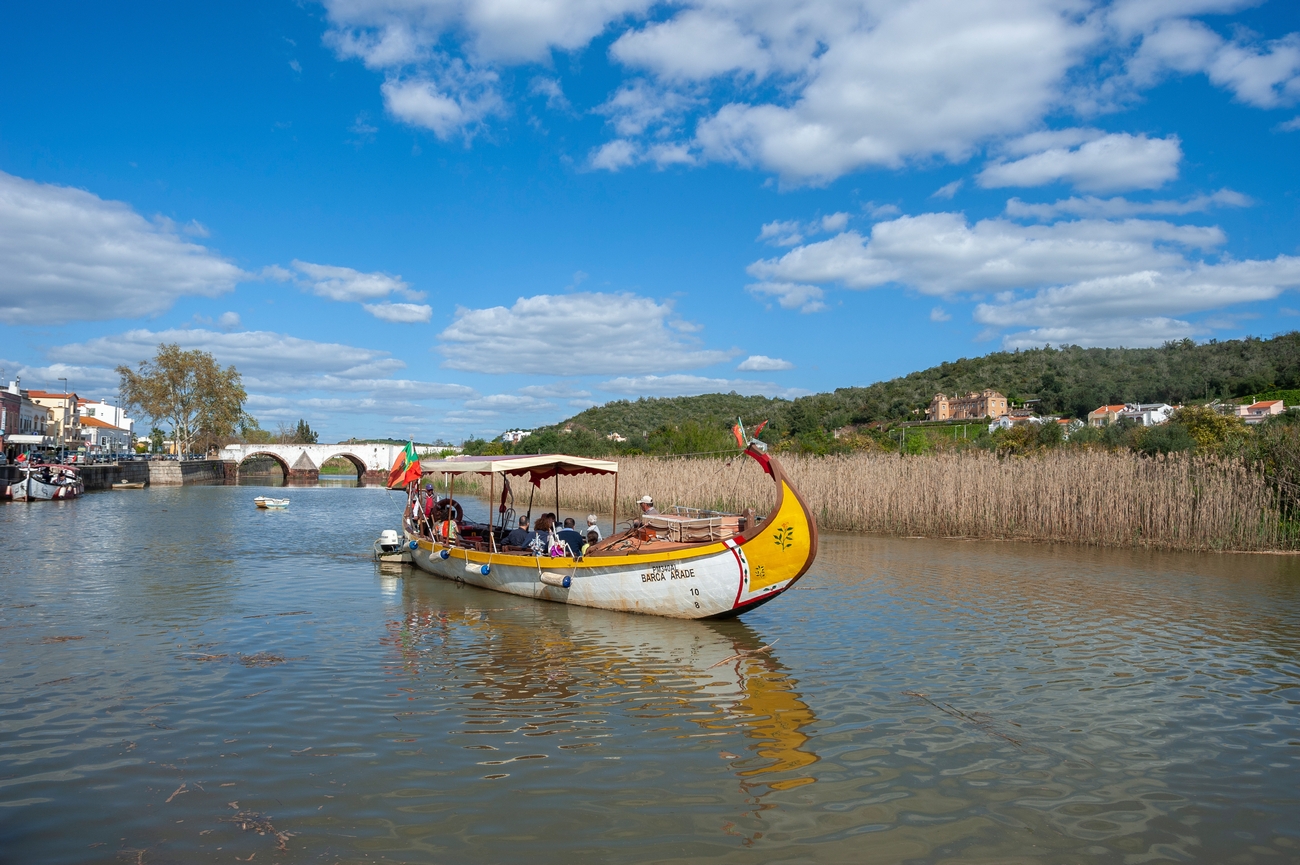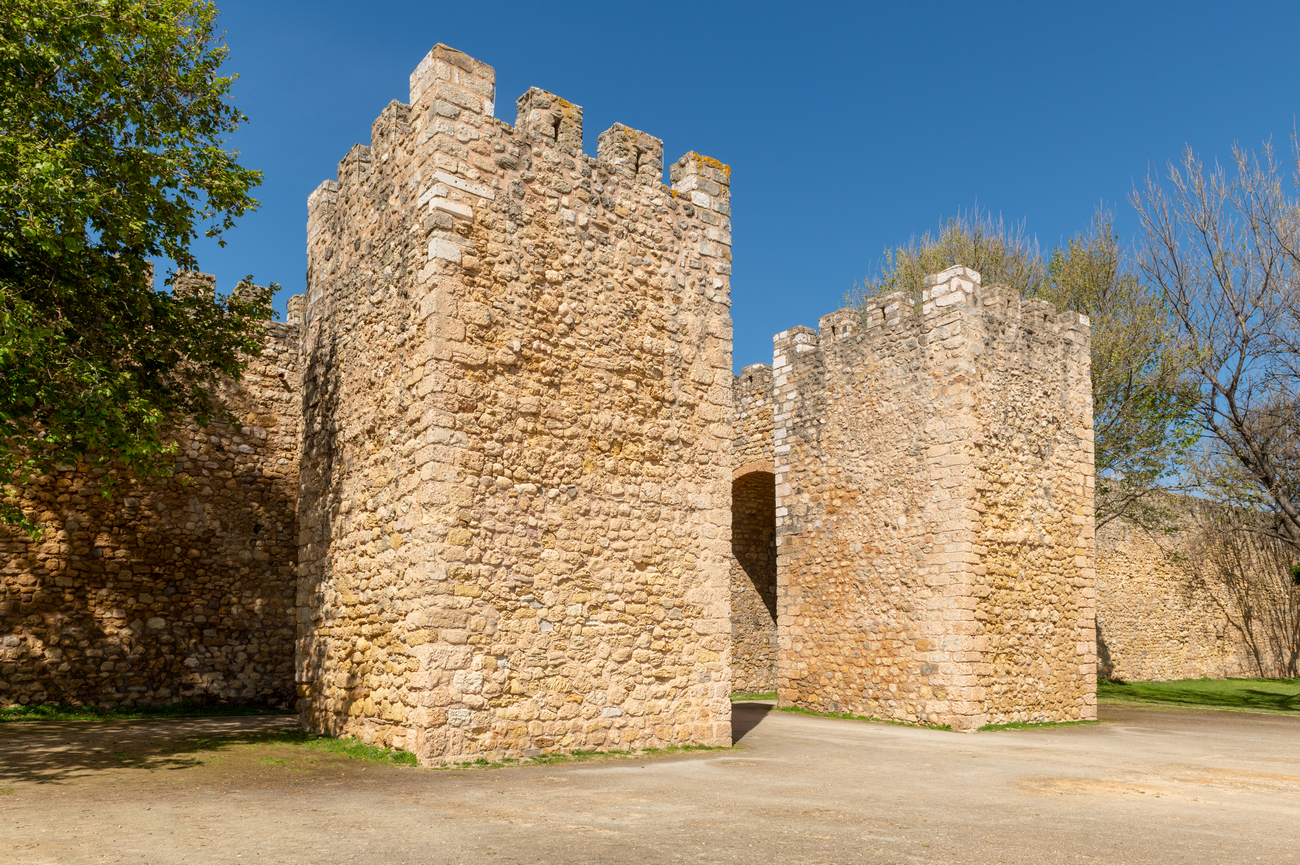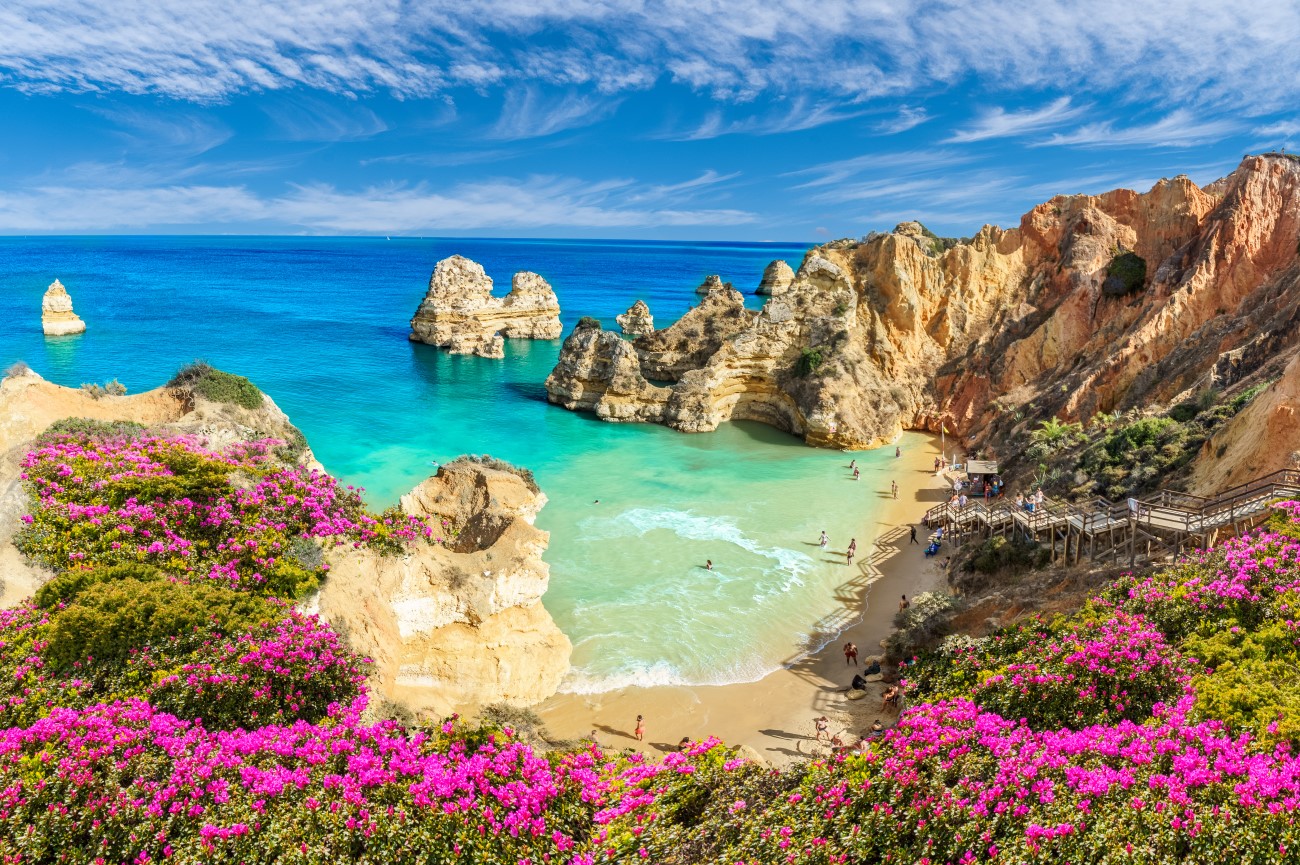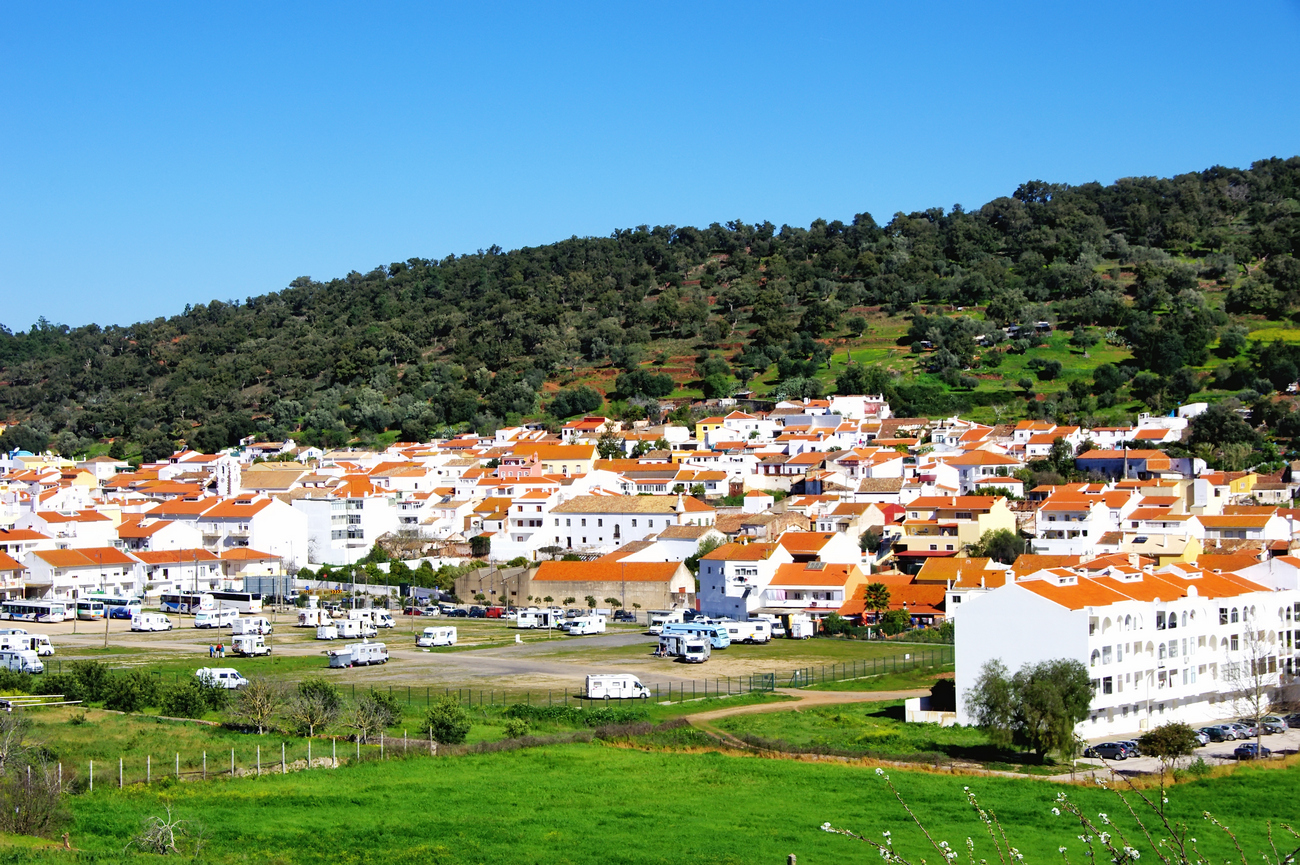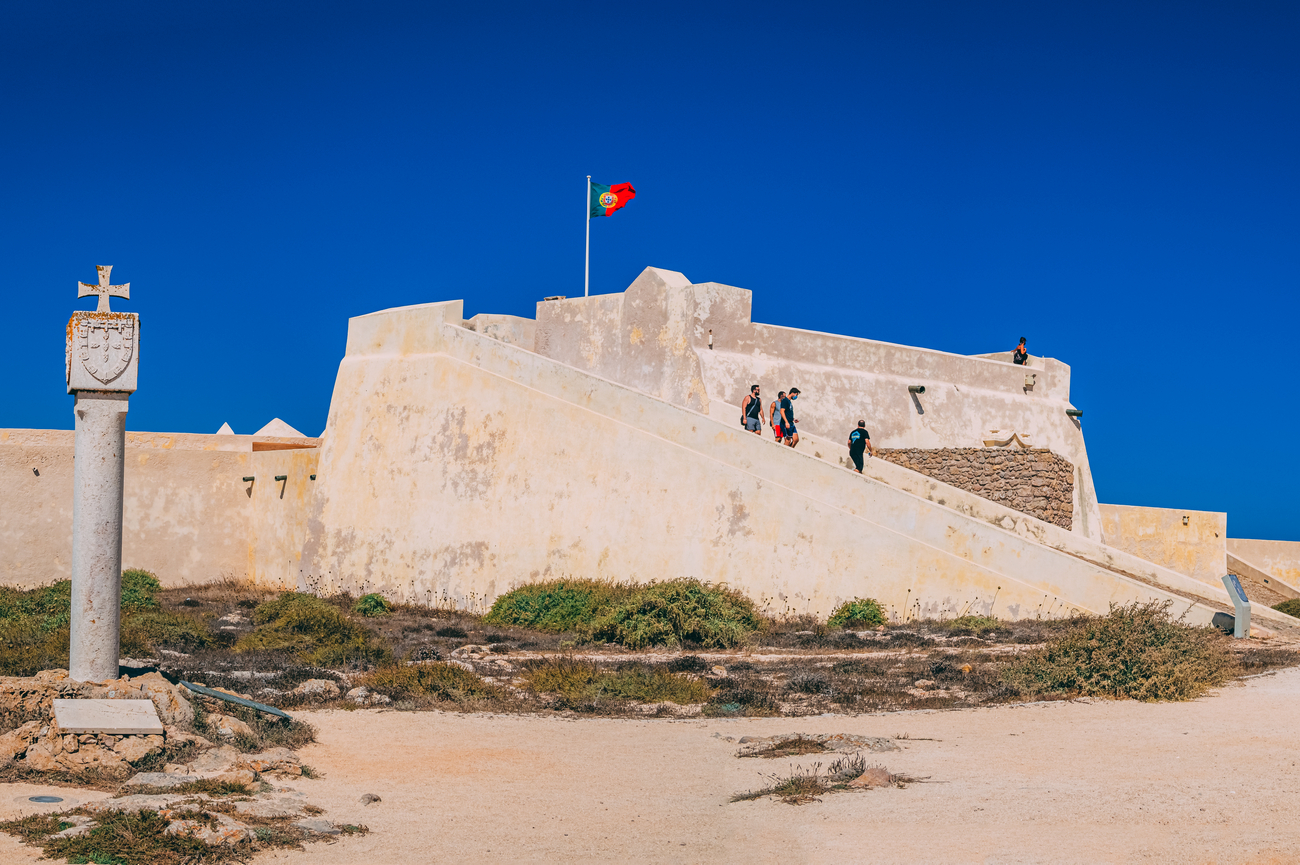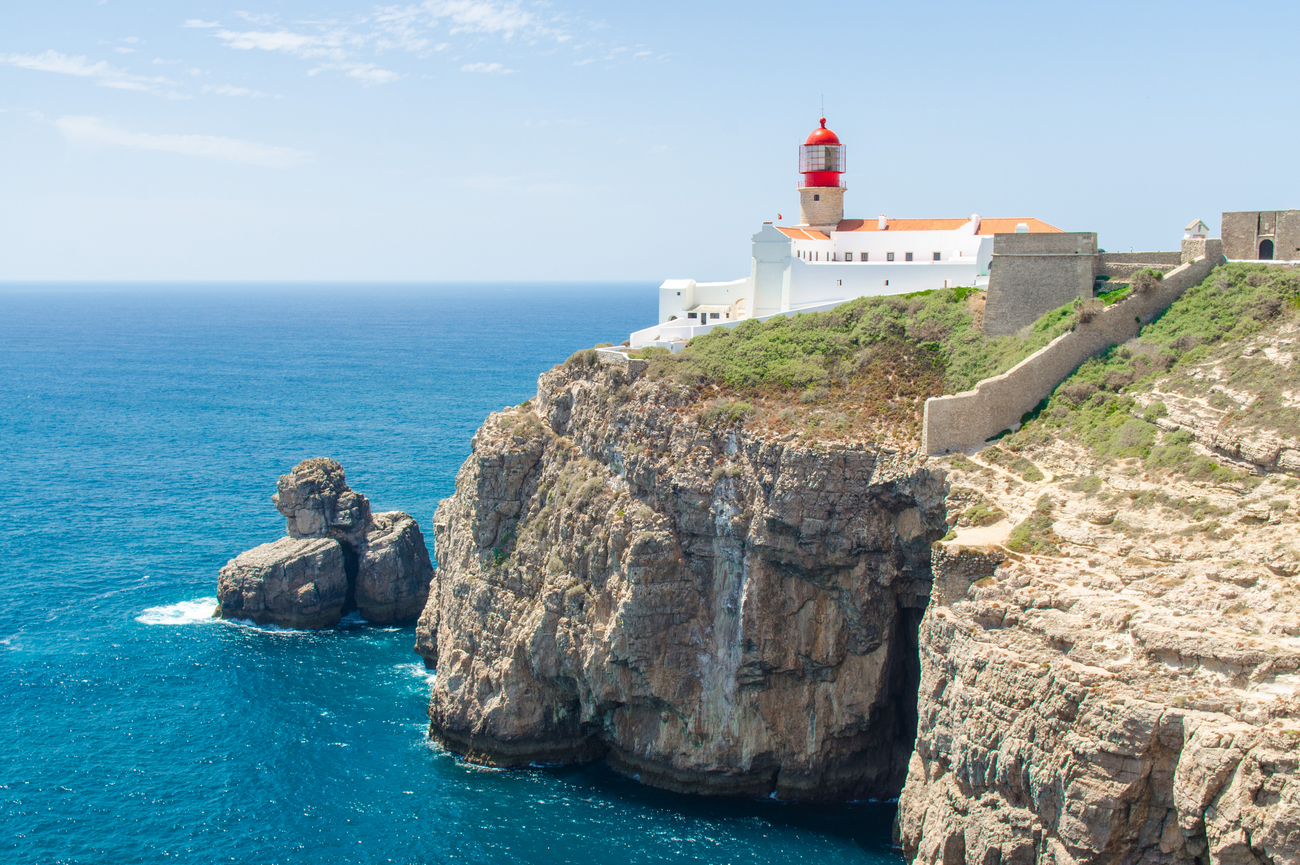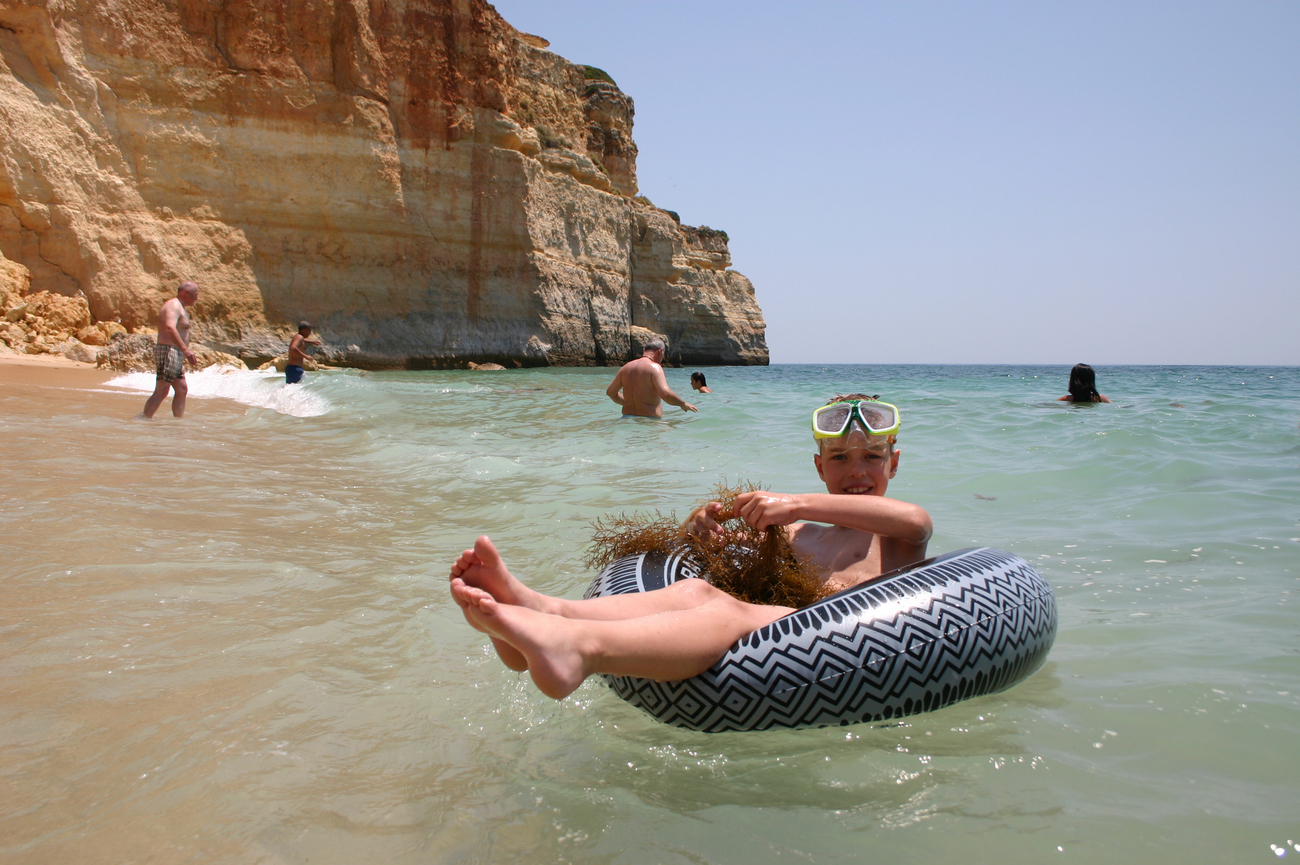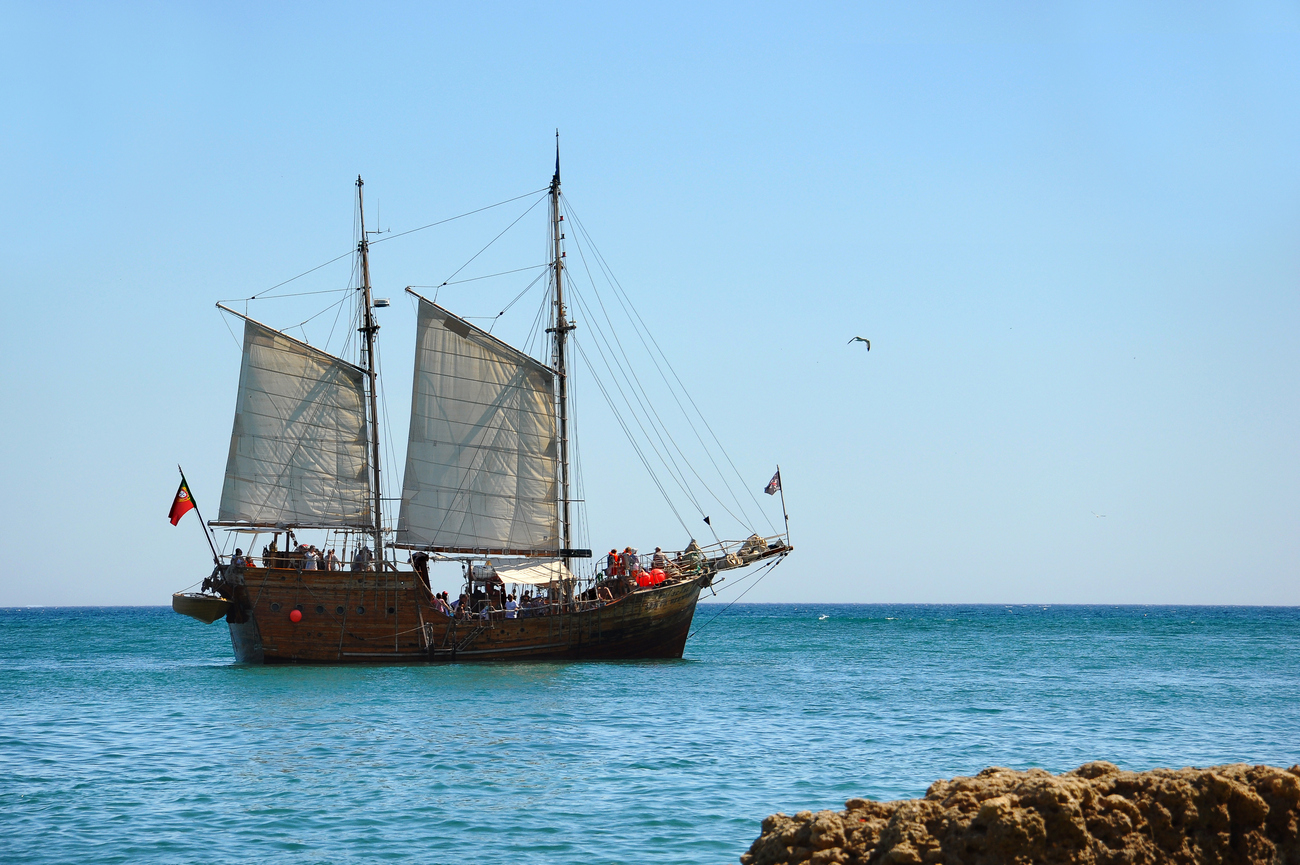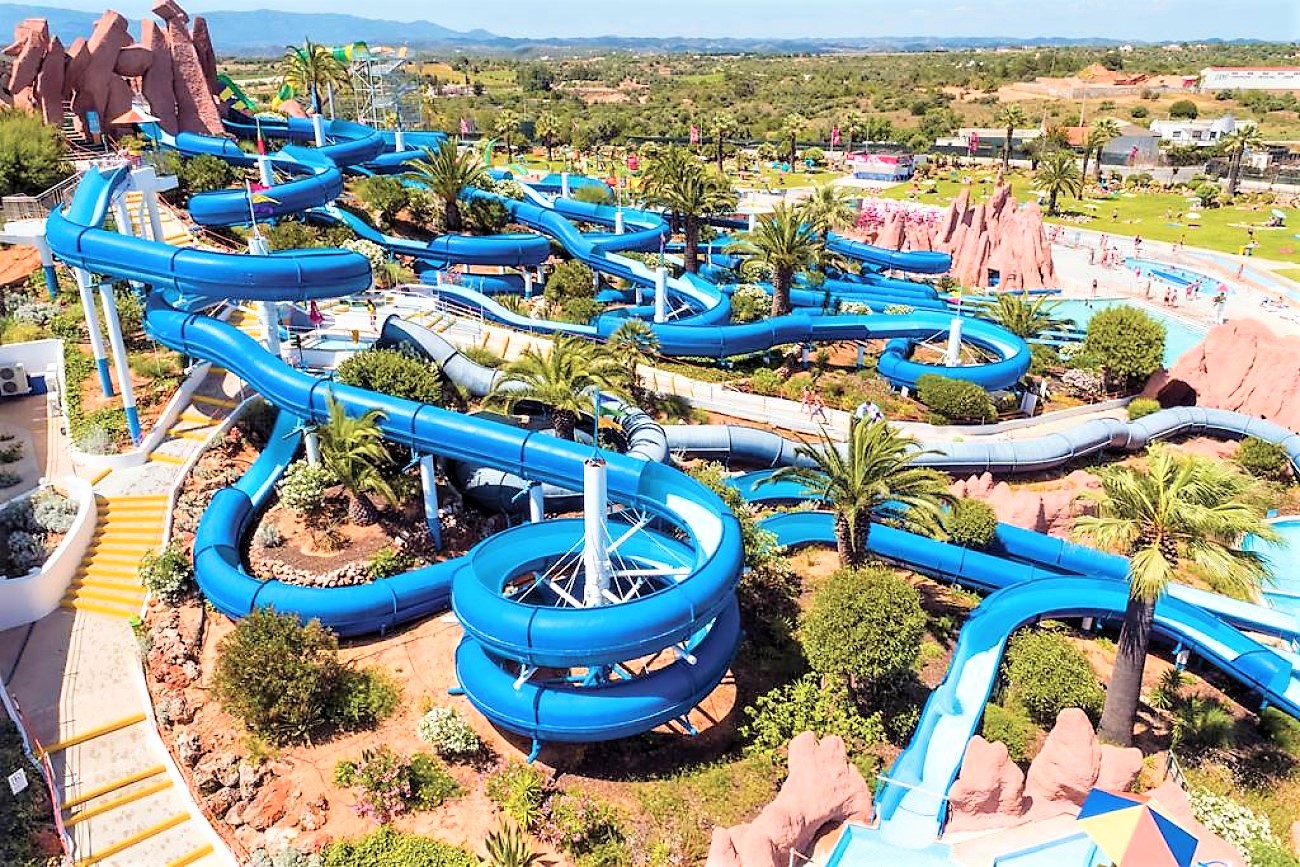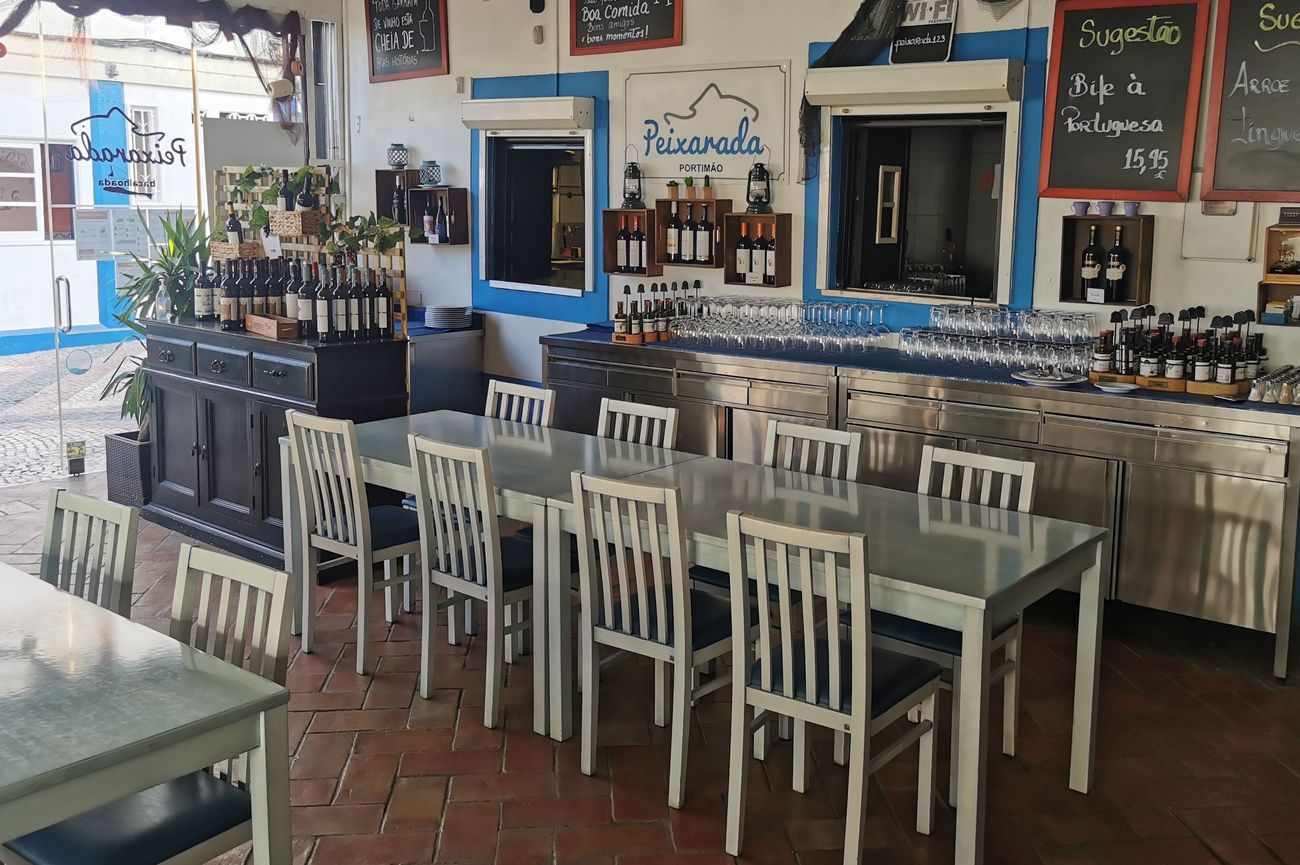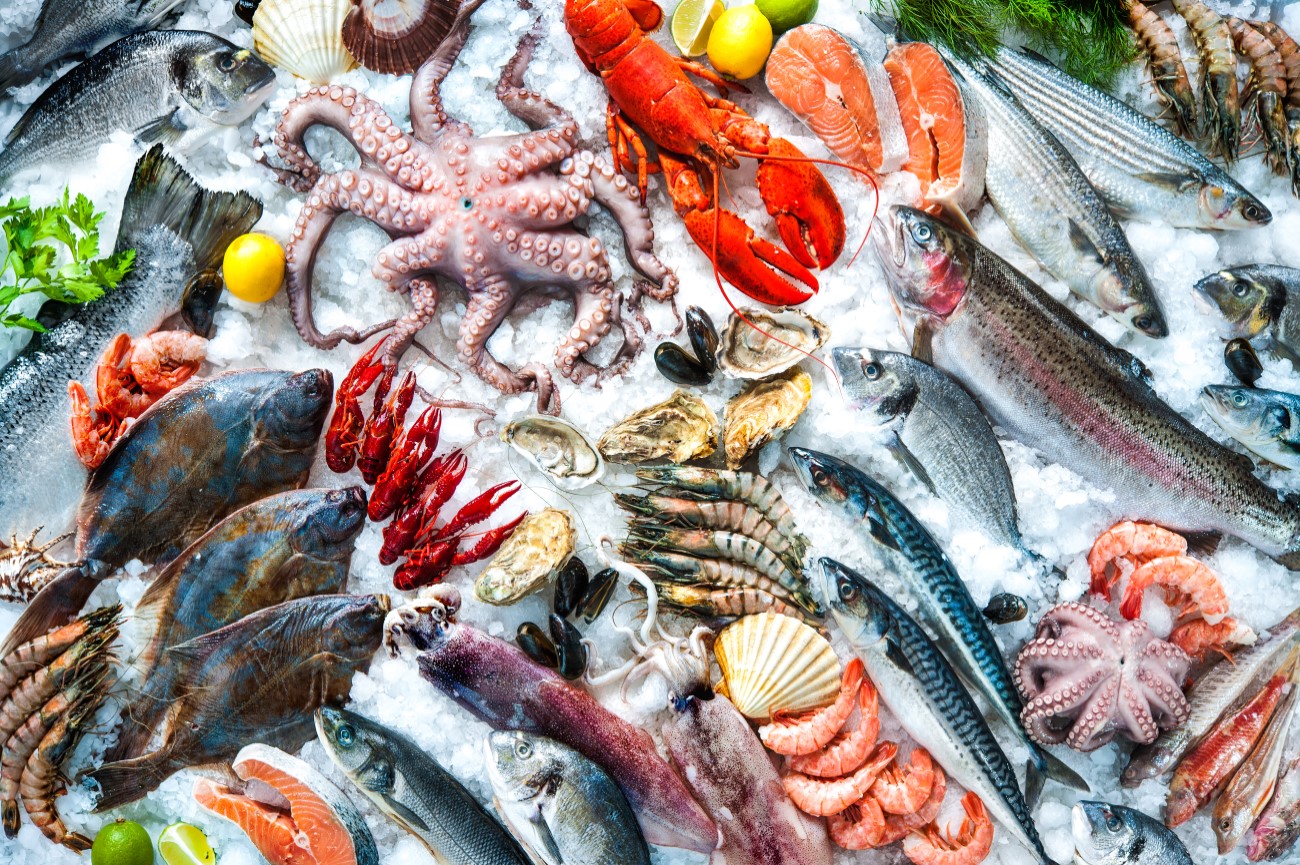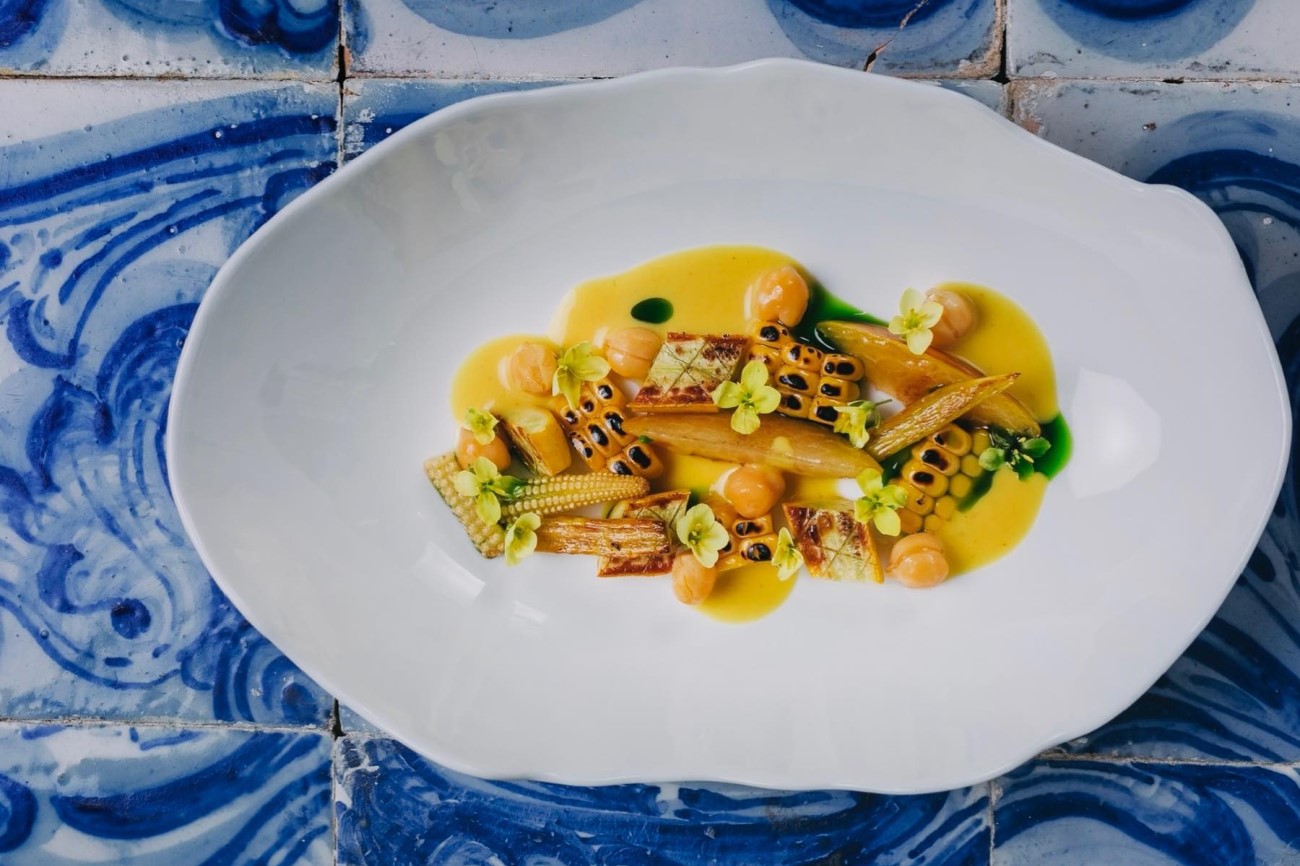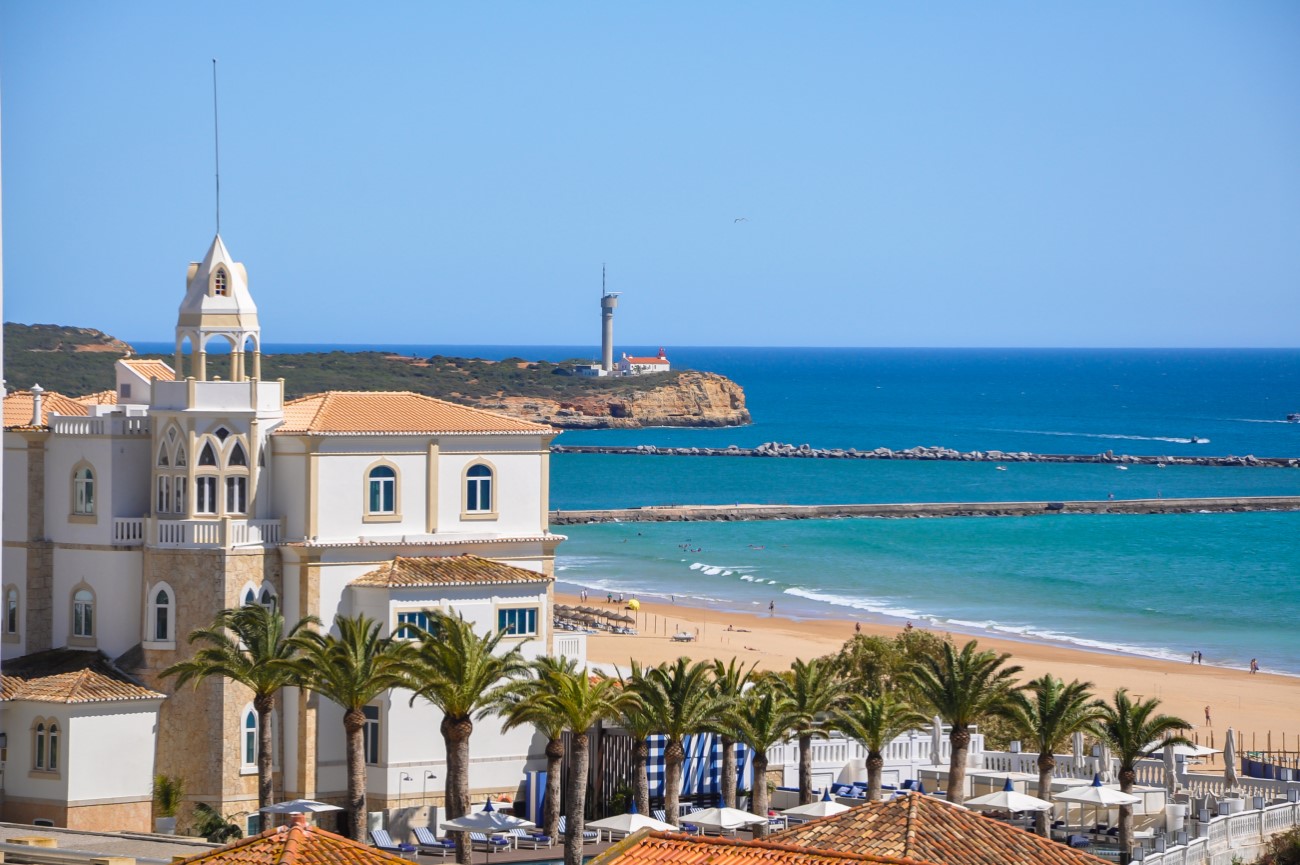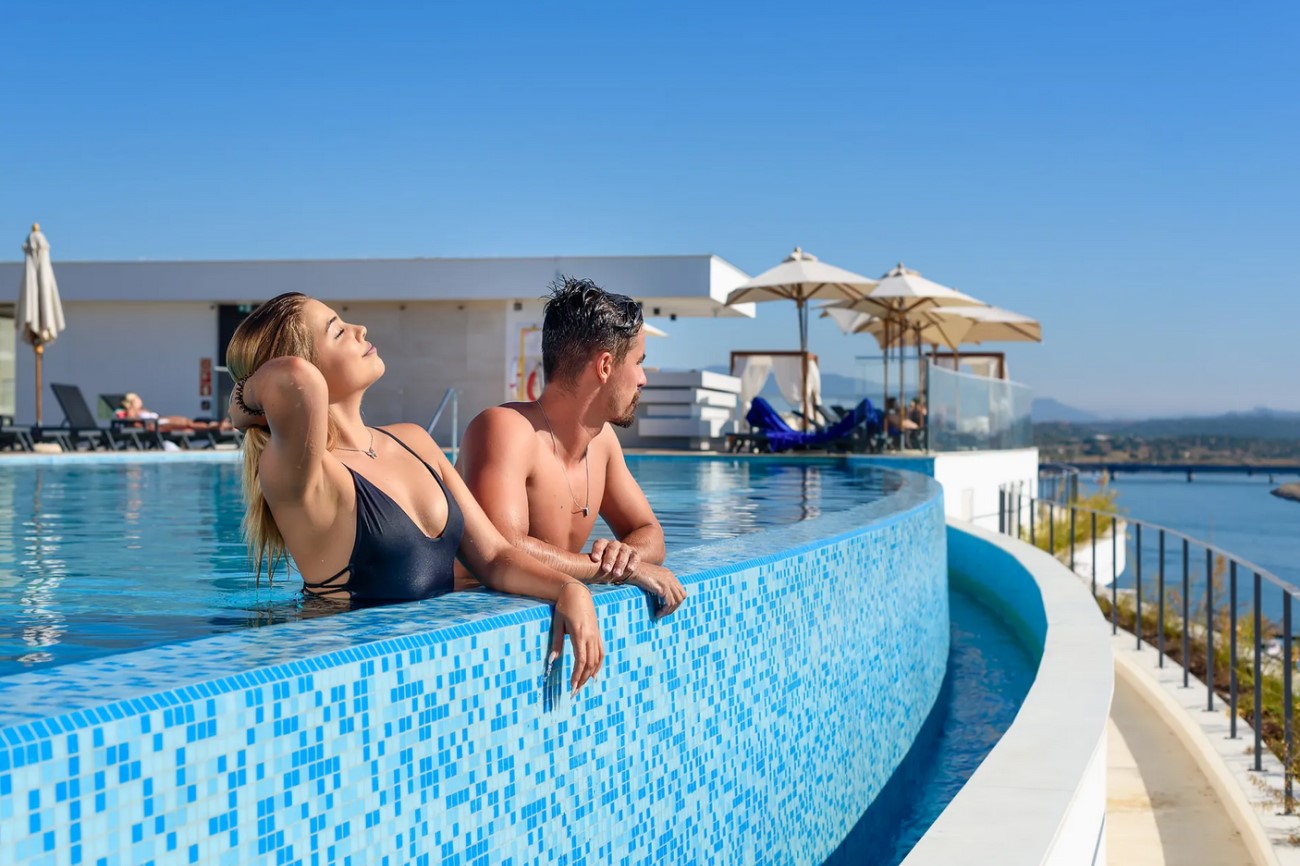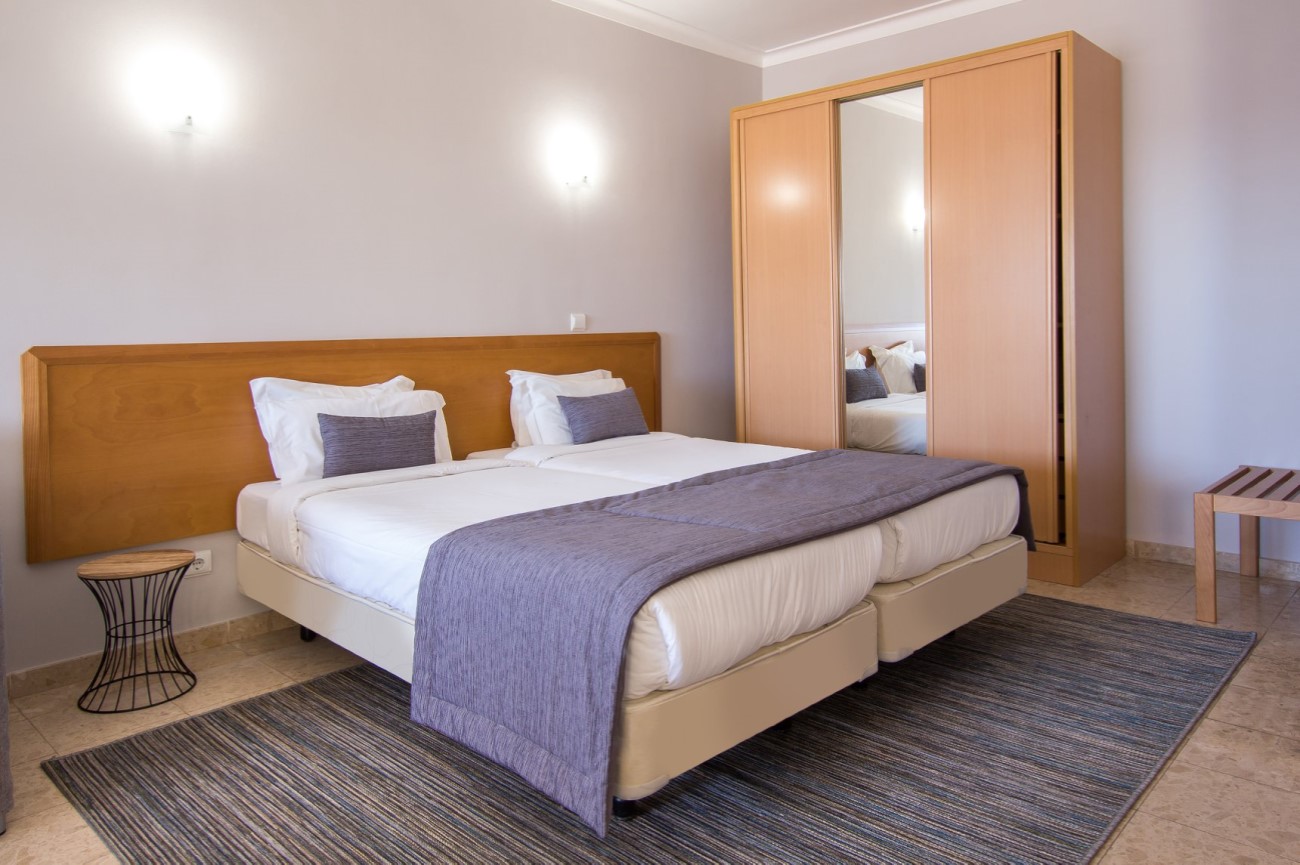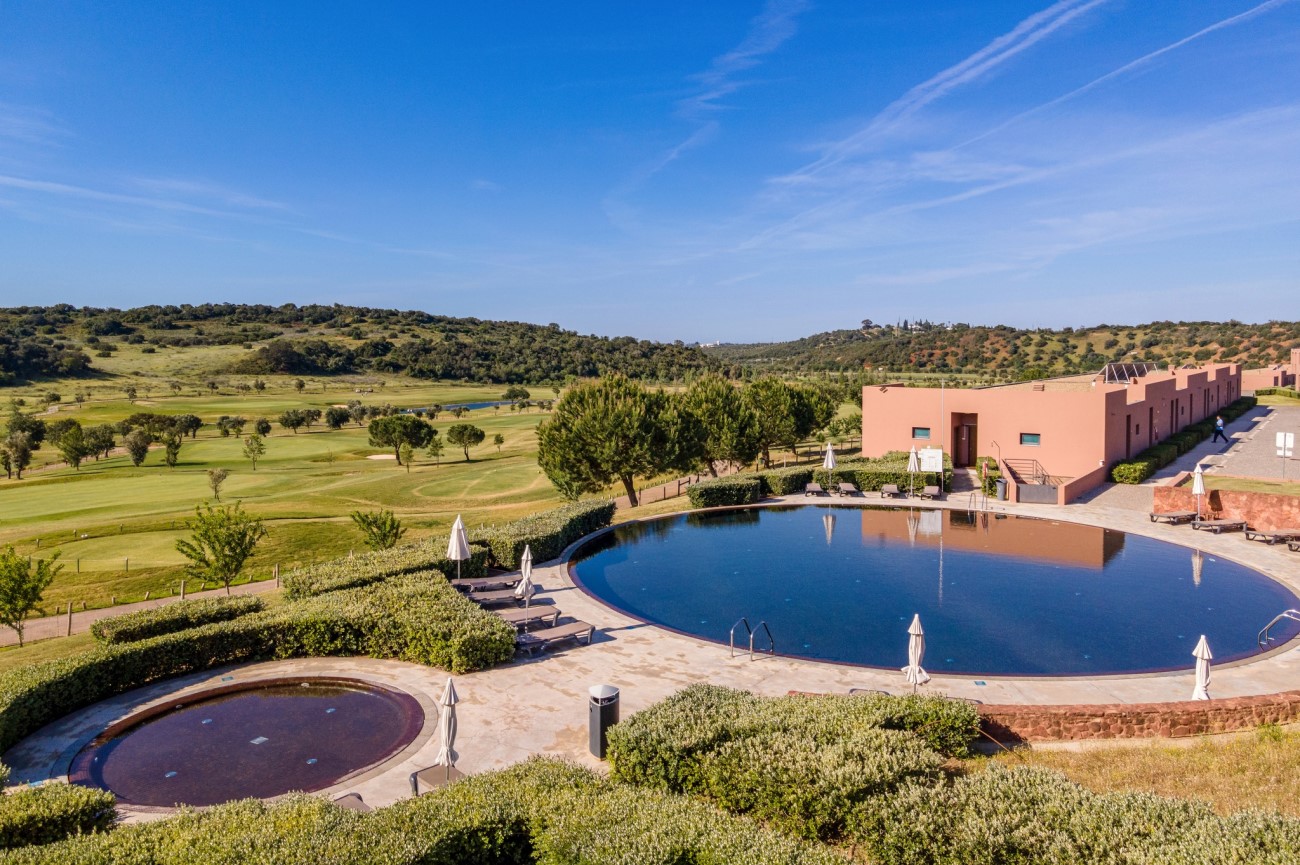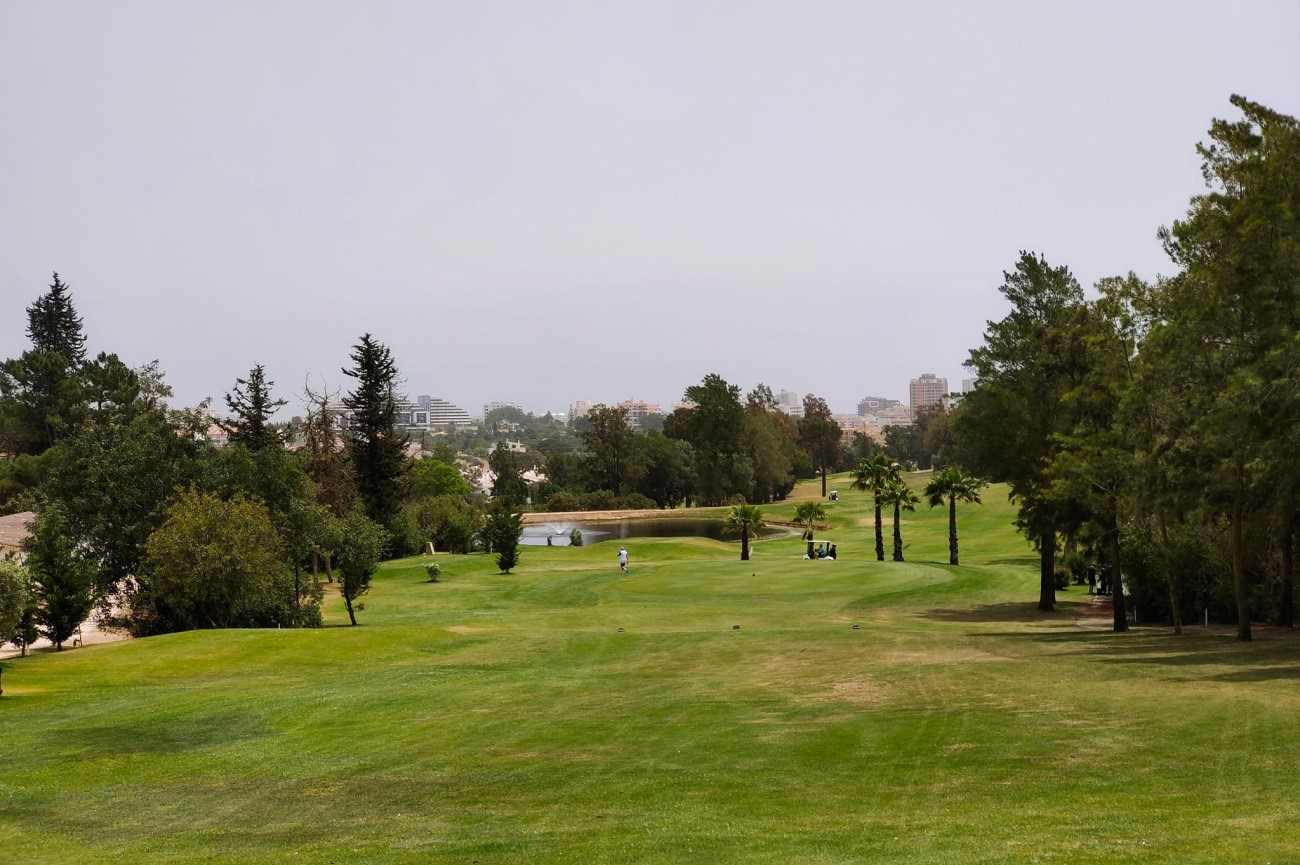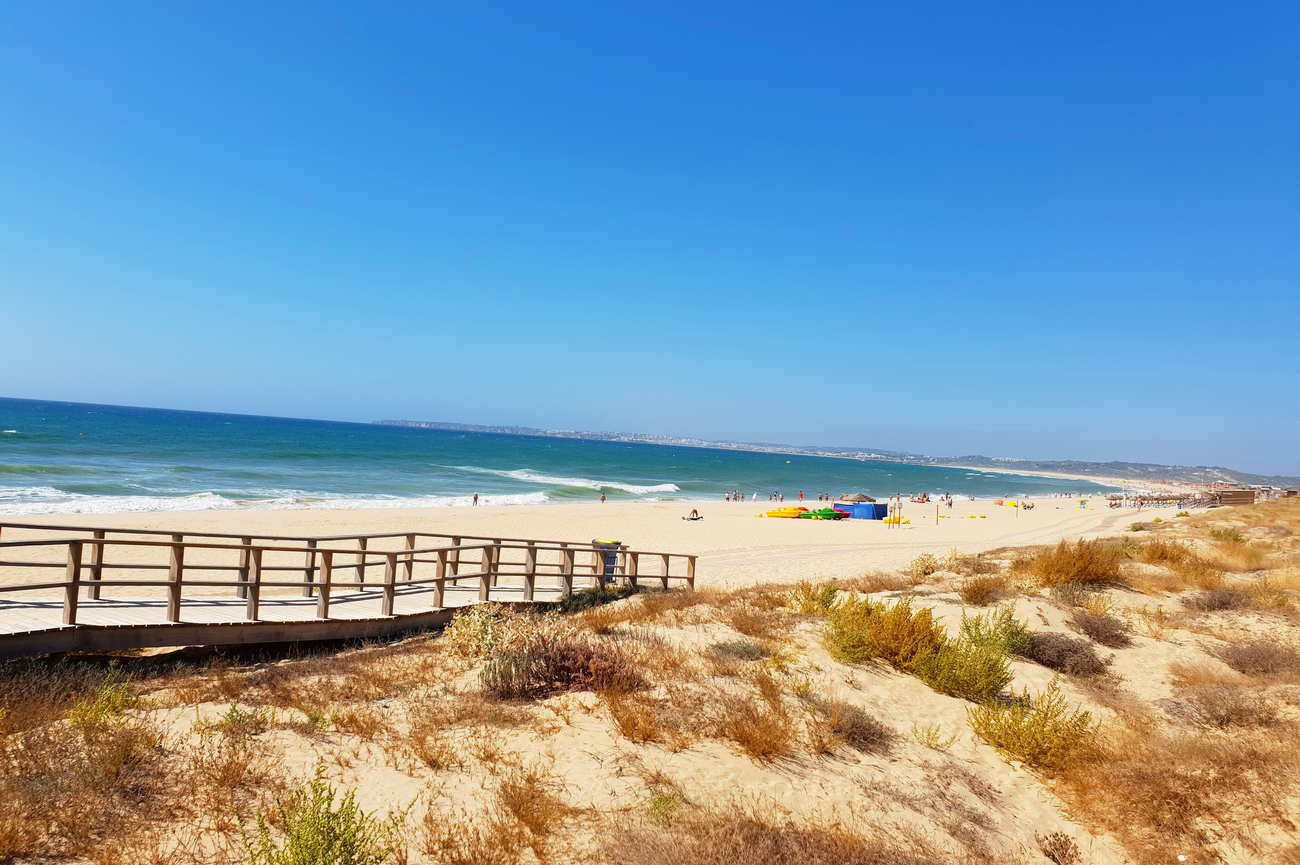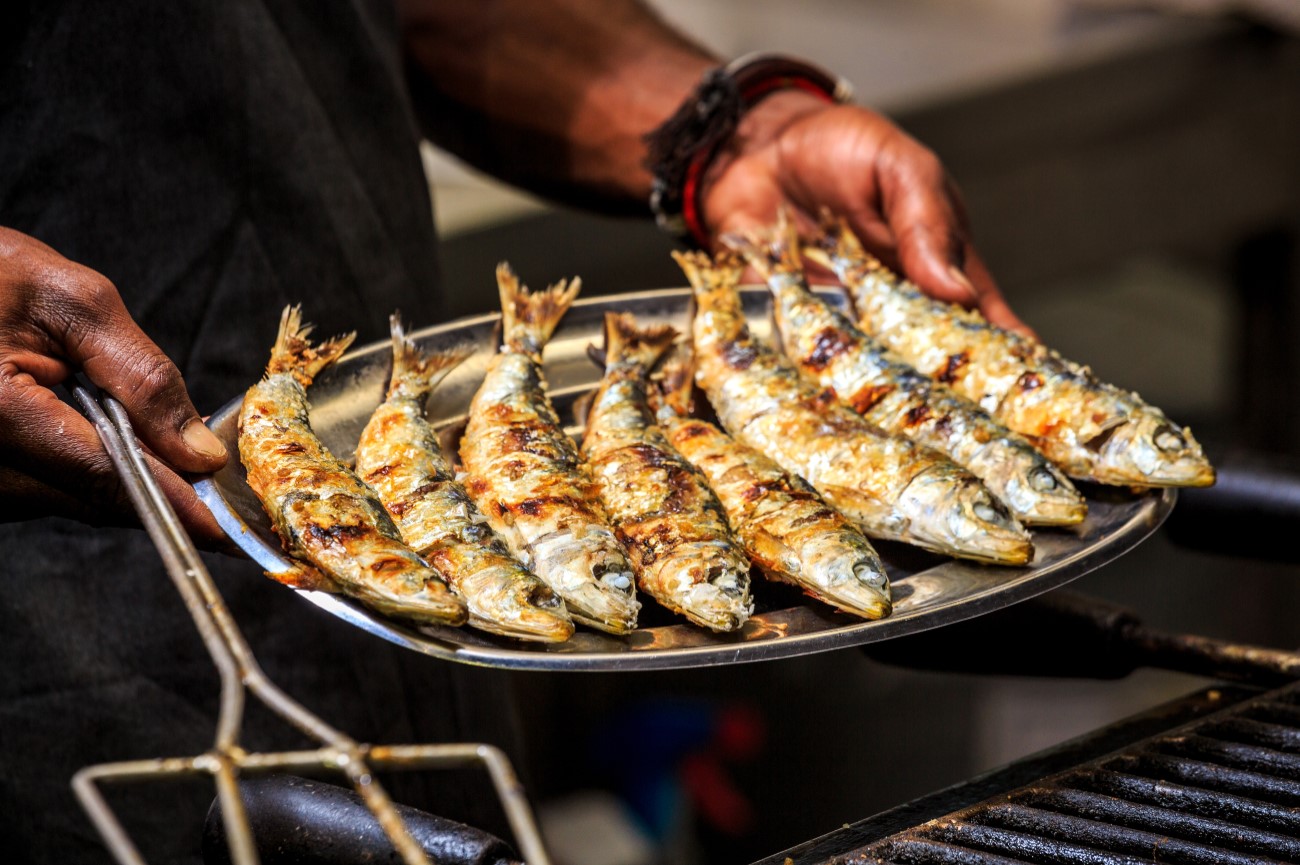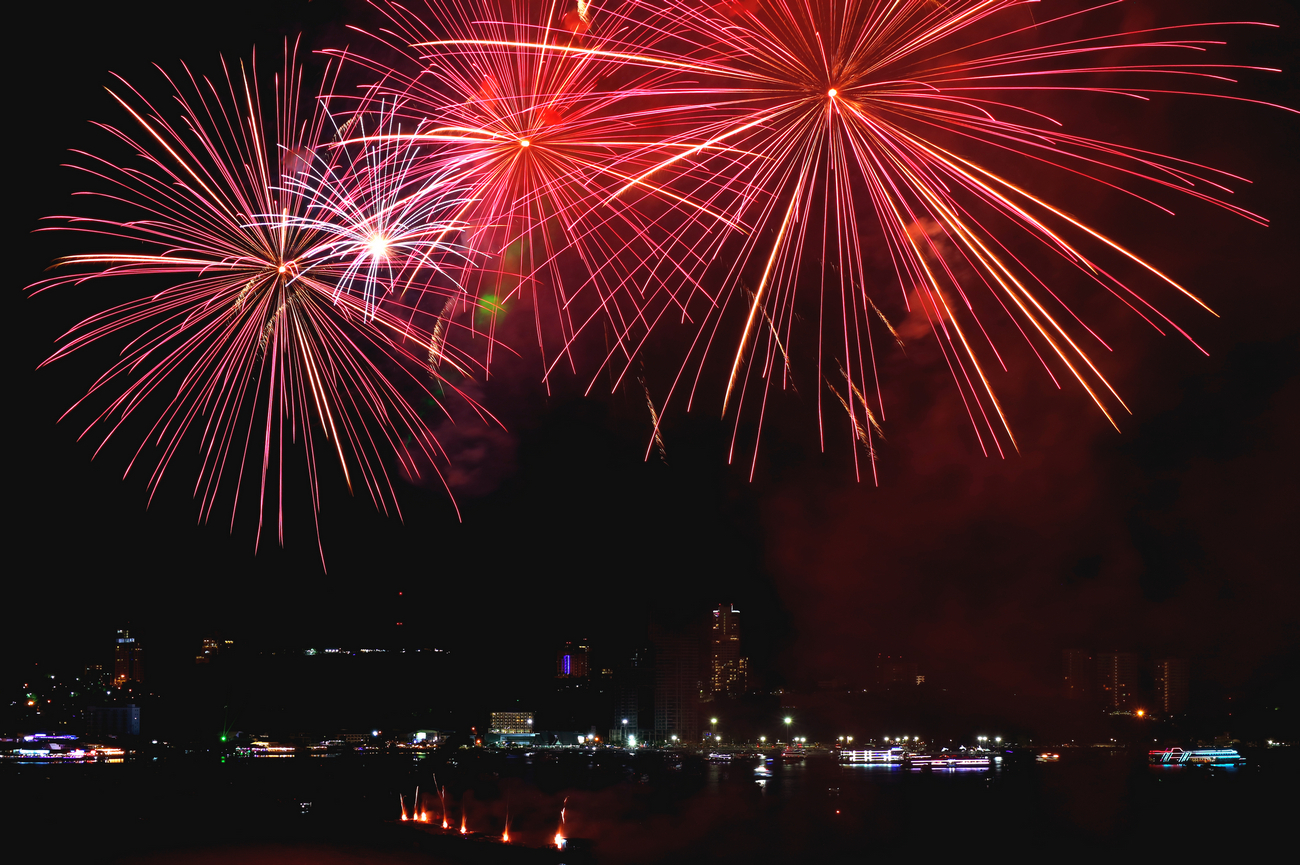Things to do in Portimão, 2-day Itinerary
Portimão is one of the largest cities in the Algarve. The city sits between the Alvor estuary and the Arade River, boasting an incredible set of beaches along its 8km coast. In the 19th century, Portimão became an important centre for the fishing conserving industry in Portugal and it remained that way until the 20th century when tourism took over. Today, Portimão is a popular summer destination, welcoming over a thousand people per year.
Visitors come here to enjoy the beaches and practice sports like sailing, surfing and scuba diving. The closest beach to the centre of Portimão is Praia da Rocha, and it’s around here that you will find most of the hotels in the city.
Our 2-day itinerary will show you the best things to do in Portimão, from picturesque squares and gardens to beaches and historical sites.
Day 1

Morning: Mercado Municipal de Portimão
Start the day with a visit to the Portimão Municipal Market. Inside you’ll find a variety of stands stocked with fresh produce, from fruit and vegetables to fish and seafood. There are also counters with florists, bakers and butchers. If you plan to stay in Portimão for a while, this is a great spot to stock up on ingredients. The best time to come is on Saturday mornings.
Igreja do Colégio
The Igreja do Colégio is the city’s former Jesuit college dating back to the 17th century. A rich merchant named Diogo Gonçalves helped fund the church with the fortune he made in the Far East. It was a sign of gratitude after he found a safe place of refuge in Portimão during a sea storm. His mausoleum is now located in the main chapel. The church’s interior is relatively modest, while the façade stands out with its bold yellow trimming.
Igreja da Nossa Senhora da Conceição
Continue walking to the Igreja da Nossa Senhora da Conceição, the Mother Church of Portimão. The church was built in the 15th century, but it was restored several times after that, resulting in a mix of architectural styles. Only a few elements remain from the original structure, including a gothic doorway with ornate capitals, buttresses and a gargoyle.
Casa Manuel Teixeira Gomes
Make your way towards the river, stopping to visit the Casa Manuel Teixeira Gomes. This local museum is dedicated to Manuel Teixeira Gomes, a local writer and politician who was also one of Portugal’s presidents.
Jardim 1º de Dezembro
Right across the museum is the Jardim 1º de Dezembro, a small garden lined with a series of tiled benches, each representing a historical moment in Portuguese history, from the establishment of the country’s constitution to the Portuguese arrival in Brazil.
Afternoon: Praça Manuel Teixeira Gomes
As you reach the waterfront, you’ll find this wide square lined with cafés and restaurants. It’s named after the former president of Portugal, who was responsible for turning Portimão into a city in the 1920s.
Ribeirinha
Take a stroll along the Ribeirinha, a palm-tree-lined promenade that follows the Arade River. Along the way, you can admire the traditional Portuguese cobblestone pavements and capture the boats coming and going from the city’s marina. If you look to the left while facing the river, you can see the Ponte Velha, an old bridge linking Portimão to the fishing village of Ferragudo.
Museu de Portimão
Pay a visit to the Museu de Portimão, a museum occupying an old canning factory. Besides showing the usual archaeological findings like the other museums around the Algarve, this one also has an interactive area that recreates the production lines of the former factory, from catching the fish to preparing it for canning and, finally, promoting it to the world.
Marina de Portimão
About a 20-minute walk from the museum is the city’s marina. It is considered one of the safest harbours in Portugal, serving as a departing point for many sailing and sea cave tours. From here you can spot the fort of Santa Catarina in Portimão and the fort of São João in Ferragudo across the river. The complex also includes a 4-star hotel, shops and restaurants.
Praia da Rocha
Spend the rest of the afternoon at Praia da Rocha, one of the most popular beaches in the Algarve. This sprawling beach tends to get quite packed in the summer, as there are many resorts based here. Still, you can usually find a spot to park your towel. Even if you don't go for a swim, you can take advantage of the variety of bars and restaurants by the waterfront, like the NoSoloAgua, which serves a mix of sushi and cocktails. Other beaches worth checking in Portimão include Praia dos Três Castelos, Praia do Vau, and Praia de Alvor, a bit further west.
Fortaleza de Santa Catarina
Overlooking the beach is the 17th-century fort of Santa Catarina. Erected to protect the city against pirate attacks, it is now a privileged lookout point, offering a great view across the Arade River and the sea. There’s no better place to watch the sunset in Portimão.
Day 1 - Portimão Tour Map
Day 2

Morning: Praia de Alvor
Drive 7km west to Alvor, a fishing village on the Western border of Portimão. Stop by Praia de Alvor and follow the wooden boardwalk across the Ria de Alvor Nature Reserve, passing through a series of salt marshes and mudflats, where you can occasionally spot white flamingos.
Castelo de Alvor
Still in Alvor, you can visit the remains of the Alvor castle. The old 13th-century Moorish castle was severely damaged during the 1755 earthquake. The remaining walls now serve as the surrounding for a children’s playground. A few steps from here is the church of Alvor, a stunning white and yellow building with Manueline-style arches and pillars.
Afternoon: Alcalar Megalithic Site
Head north to visit the Alcalar Megalithic Site. This large necropolis is made up of 18 different tombs and was built around 5000 years ago. The tombs were only discovered in the late 19th century but are now one of Portugal’s national monuments.
Day 2 - Portimão Tour Map
Other things to do in Portimão
- Teatro Municipal Portimão: Housed in an old neoclassical palace, the municipal theatre hosts a variety of shows throughout the year, from plays to concerts. Be sure to check the website to see what’s scheduled.
- Autódromo Internacional do Algarve: About 30-minutes drive from Portimão is Algarve’s main race circuit. You can book a variety of activities here, including karting, off-road driving and racing with sports cars. The complex is also the stage for events like the Portuguese Grand Prix.
- Horseback riding: A fun way to explore the coast is to join a horse riding tour. Many local companies offer this experience, which usually lasts about one hour.
- Diving: Near Portimão is the Ocean Revival, a kind of underwater park for divers, which takes visitors to four decommissioned Portuguese Navy vessels that were deliberately sunk to create an artificial reef. Anyone can access the area for free, but if you’re not an experienced diver, you should book a tour with a local diving school.
Day trips from Portimão
- Silves: From Portimão, you can hop aboard a boat and sail along the Arade river towards Silves. Several companies provide this service, including the Alvor Boat Trips, which offers a 5-hour river cruise with a light meal and drinks, including a 2 hour stop in Silves. Once you get there, you can take your time wandering around the old town, visiting the castle and the cathedral.
- Lagos: About 20km west from Portimão is the charming town of Lagos. You can visit the medieval castle and take a walk along the harbour, where you can catch a boat to the nearby caves. The town is famous for its paradisiacal beaches with striking rock formations like Praia do Camilo.
- Monchique: If you want to escape the coast, head north towards the mountains of Monchique. This small town is known for its thermal baths and natural springs. The surrounding hills offer plenty of opportunities for hiking too.
- Sagres: Around one hour from Portimão is Sagres, the most western point in the Algarve. Among the main attractions here is a 15th-century fortress and the Cabo de São Vicente lighthouse, which offers stunning sunset views. The beaches here are very popular among surfers, as the wind hits from the south and the west.
Top things to do with kids in Portimão
Portimão offers plenty of family-friendly activities. In the summer, you can take advantage of all the beaches, including the lively Praia da Rocha or the slightly quieter Praia de Alvor. Kids will enjoy following the wooden boardwalk along the Alvor estuary, which is home to many bird species.
Alternatively, you can take a boat trip from the marina to visit hidden caves or spot dolphins. You can choose from small vessels or join the crew of the Santa Bernarda Pirate Ship. Other nearby attractions include the Slide & Splash, a water park filled with slides and pools for children of all ages.
Where to eat in Portimão
As a land of fishermen, Portimão is renowned for its seafood. Grilled fish like sardines and mackerel are popular options, along with shellfish like razor clams, often served with rice to make the traditional arroz de lingueirão. The city also produces wine, with the Portimão Rosé being the region’s most famous product. Below are some of the best places to eat in Portimão:
- Restaurante Bacalhoada: Codfish is king at this local restaurant. There are more than 15 varieties of codfish dishes, including fried, baked and pureed. Try the Bacalhau à Brás, which combines codfish with scrambled eggs, parsley, potatoes and black olives.
- Marisqueira Carvi: Located near the riverfront, Carvi is renowned for its seafood dishes. Highlights include the fried squid and the shellfish rice.
- Vista: Set inside the Bela Vista Hotel is this Michelin-star restaurant run by Chef João Oliveira. Guests can enjoy the surrounding ocean views, while tucking into one of the tasting menus, which feature local ingredients like cuttlefish, clams and anchovies.
Where to stay in Portimão
- Bela Vista Hotel (5 stars): Overlooking Praia da Rocha is this stunning hotel occupying a 20th-century mansion. The interior stands out with its walls covered in traditional azulejo tiles and stained glass windows. Guests also have access to an outdoor pool and a spa.
- Jupiter Marina Hotel (4 stars): This adults-only hotel is located halfway between the old town and the marina of Portimão. Most rooms offer private balconies facing the Arade River. Facilities include an outdoor pool, spa and a rooftop bar. You can also rent a bike to explore the coast or catch the free shuttle to Praia da Rocha.
- Clube Praia Mar (3 stars): Only a 15-minutes walk from Praia da Rocha is this three-star aparthotel. It offers 72 apartments, ranging from studios to two-bedroom. Some offer city views, while others overlook the ocean. Guests can also access the outdoor pool, and parking is available for an extra fee.
Fancy a vacation rental instead of a hotel? Here is our selection of the best vacation rentals in Portimao.
Best golf courses in Portimão
If you’re looking to practise your swing, there are about a dozen golf courses in the vicinity of Portimão. Some of the best spots include the Morgado do Reguengo Resort, which features two 18-hole courses, the Morgado and the Álamos. Another option is the Alto Golf, which has a prime location between Alvor and Praia da Rocha.
Best time to visit Portimão
If you want to see the lively side of Portimão, you should visit in the summer months between June and August. The beaches will be busy, but you’ll also have the chance to join the city’s most popular annual events, like the sardine festival. This is also a great time to do water sports or embark on a boat trip. For a quieter atmosphere, visit in spring or autumn. The weather is still relatively pleasant at this time and there will be fewer crowds, meaning lower hotel rates.
Portimão Festivals
- Festival da Sardinha: Held on the first week of August, this festival celebrates the traditional Portuguese dish of grilled sardines. Live music, street performers, and plenty of delicious food take over the city’s waterfront.
- New Year’s Eve: New Year’s Eve is also a big celebration in Portimão with live bands performing on the waterfront, food stalls and a fantastic fireworks show.


